Enzo Ferrari declared it “the most beautiful car ever made”. It was a car driven by film stars, famous musicians and royalty. The first hatchback to hit 150mph. A sports car that looks as alluring at 60 as it did when the covers came off in Geneva in 1961.
It was also a bit of a fraud.
Here, as it celebrates its 60th anniversary, we tell the story of the Jaguar E-Type.
Jaguar XK120
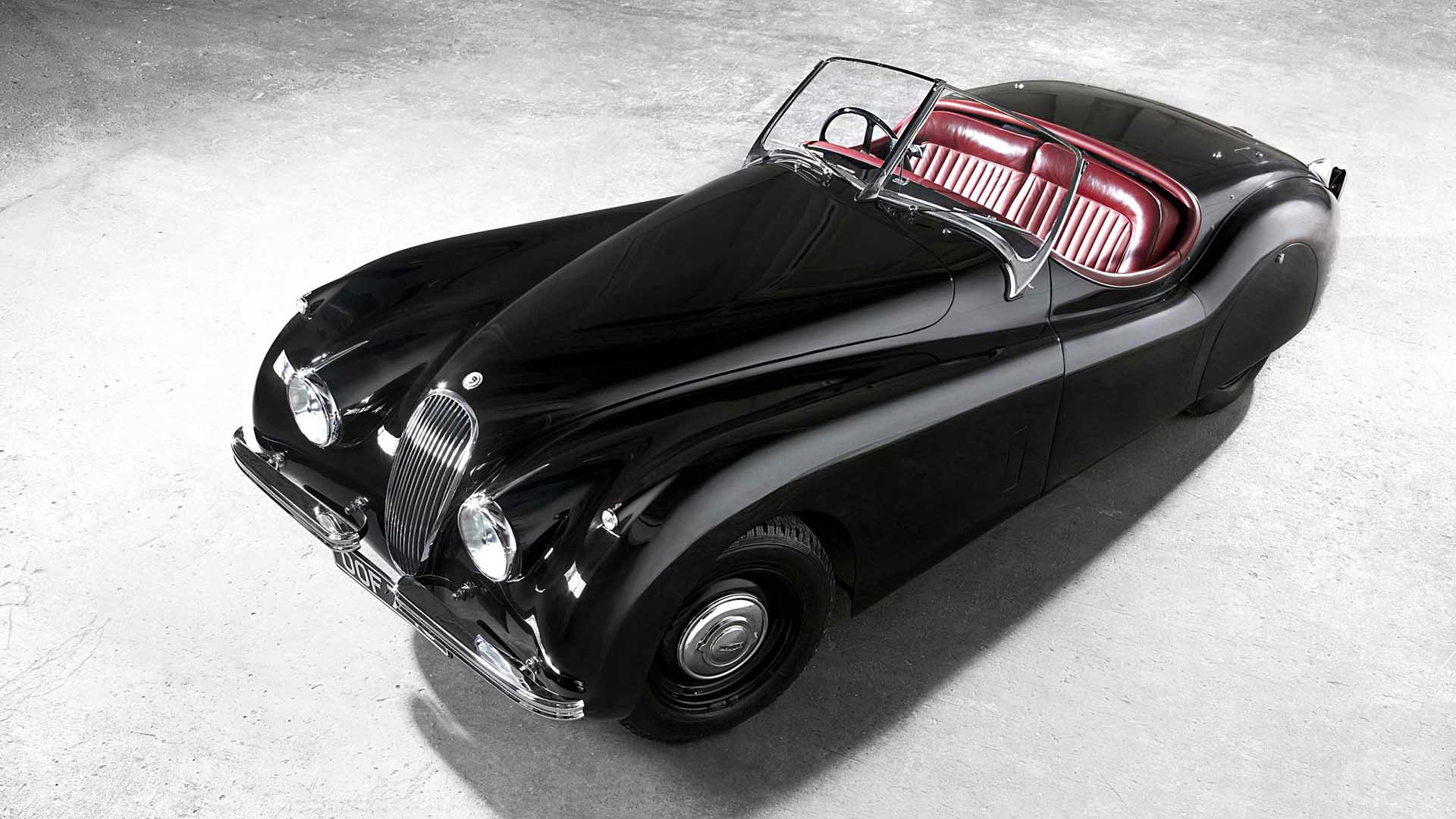
Jaguar had form in creating groundbreaking production cars. The XK120 of 1948 was the fastest homegrown car you could buy, spearheading the British sports car’s assault on the American car market. Sure, it was beautiful, but it’s biggest achievement was the delivery of extraordinary ride comfort in a car designed for performance. A remarkable feat when you consider that it was destined to be little more than a test bed for Jaguar’s new XK 3.4-litre six-cylinder engine.
Jaguar XK150 and D-type
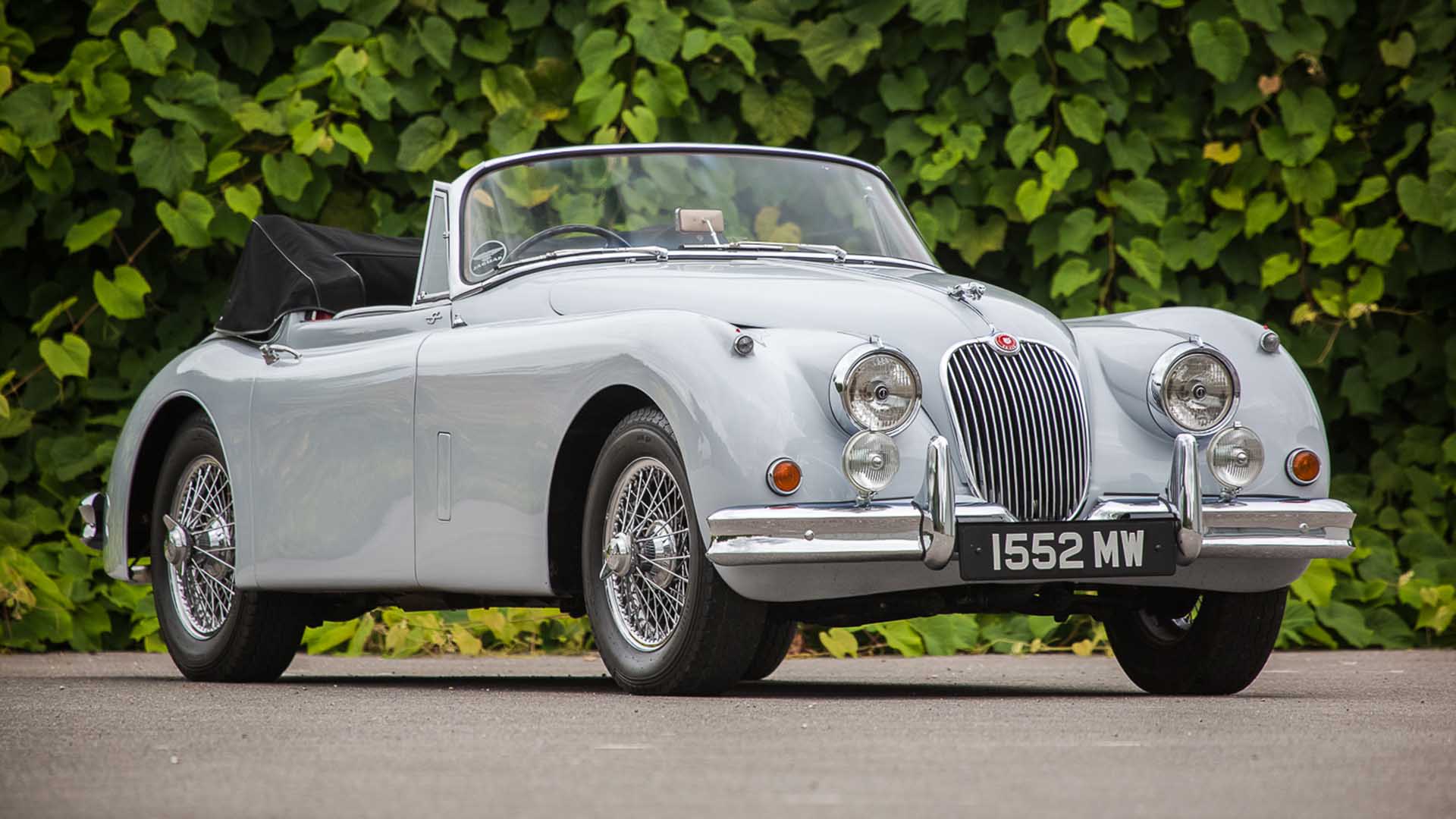
The XK120 became the XK140, which in turn became the XK150 of 1957. By the time production of the XK150 ceased in 1960, the engine had grown to 3.8 litres, giving the car a top speed of 130mph. Meanwhile, the Jaguar D-Type had seen great success on the track, famously winning the Le Mans 24 Hours race in 1955, 1956 and 1957. One could argue that the XK150 and D-Type were the parents of the E-Type. It would be quite a birth.
Work begins
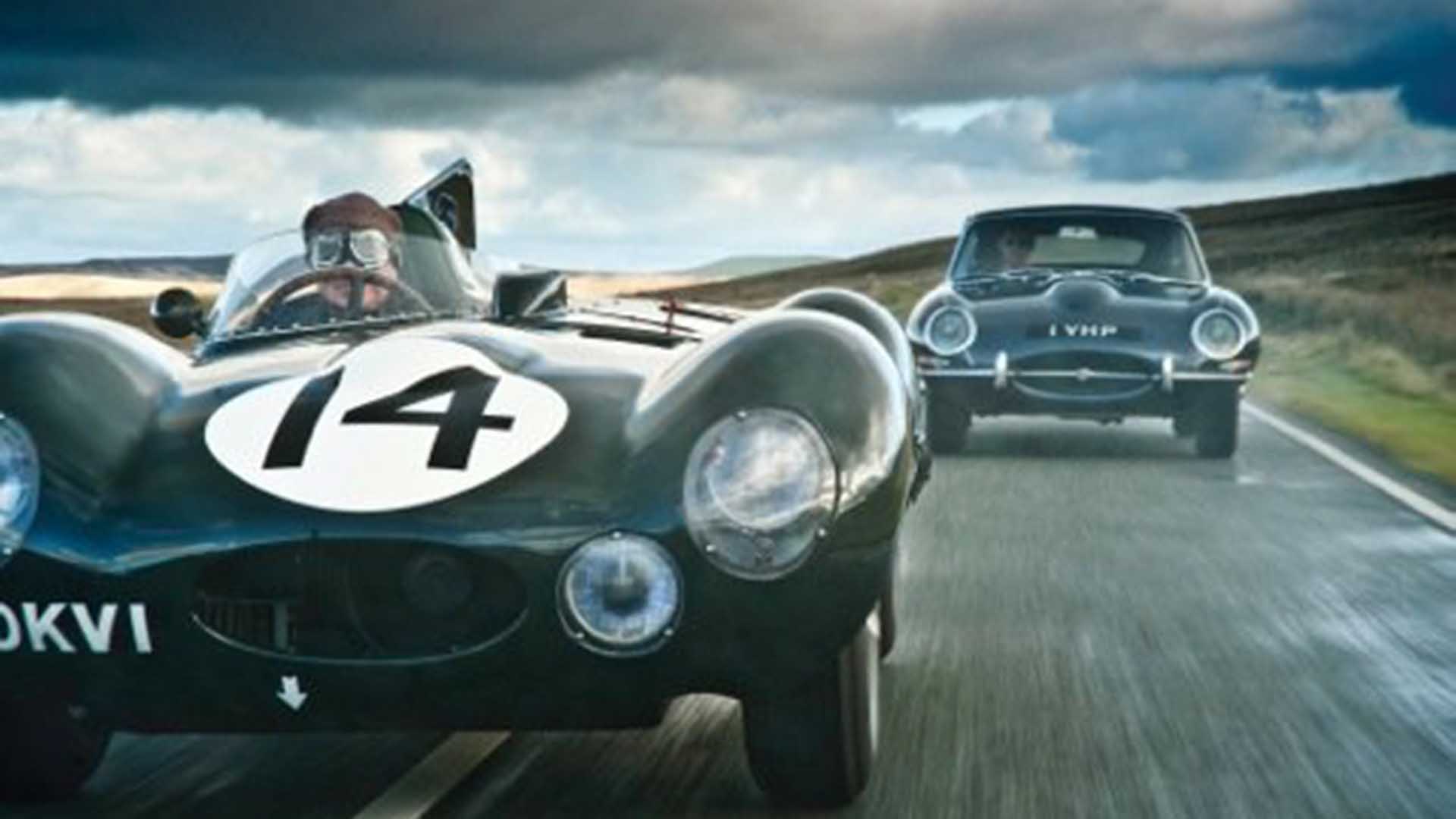
In December 1956, a project team led by William Heynes started work on what would become the first Jaguar E-Type prototype. Malcolm Sayer was tasked with designing a body that followed the style of the D-Type, but with more emphasis paid to the air flow over the bonnet, wheel arches and cockpit. The first prototype was completed in 1957, with the codename of E1A. That’s ‘Experimental Type 1 Aluminium’.
Jaguar E1A and E2A
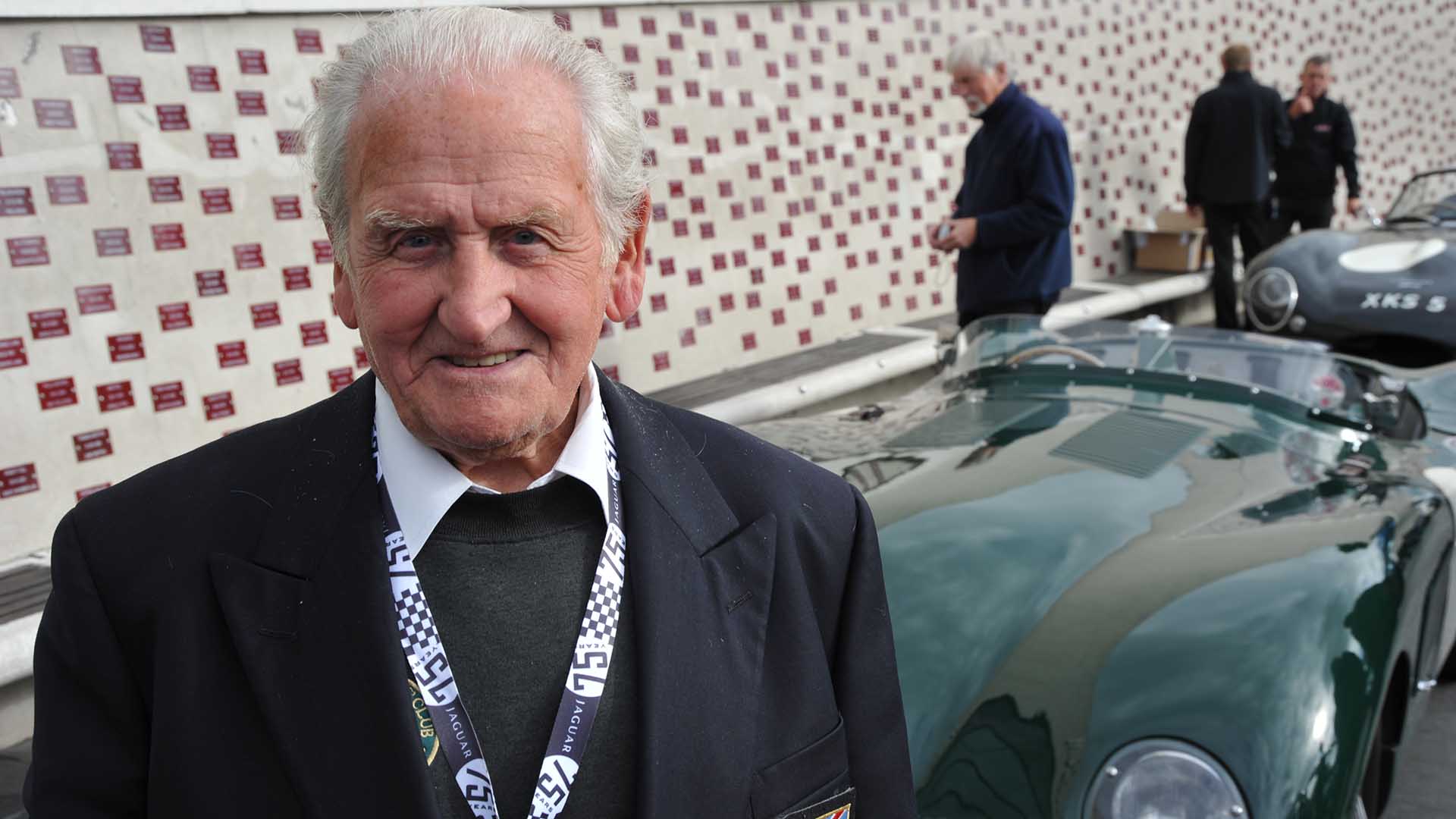
The E1A was a scaled-down version of the eventual production car, with power sourced from a smaller 2.4-litre XK engine. This was the only engine that would fit under the bonnet. The prototype led a hard life at the MIRA proving ground and on public roads, most notably at the hands of test driver Norman Dewis (pictured). E1A evolved into the E2A, which was developed alongside the next Jaguar MkX saloon. Significantly, both cars featured independent rear suspension, which was developed in less than a month.
Welsh rarebit
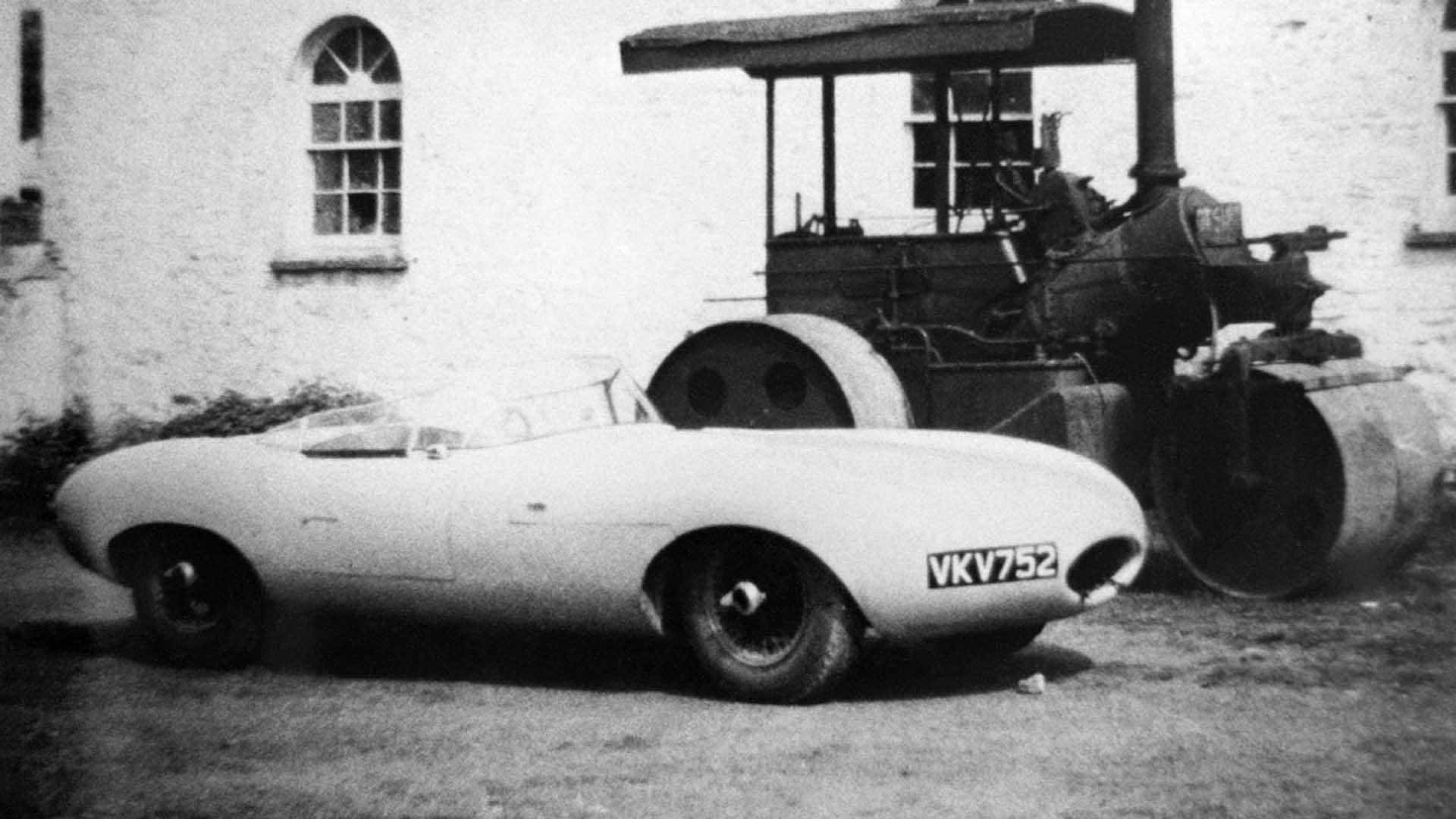
Jaguar loaned the E1A to editor of The Motor, Christopher Jennings. In a letter written in 1958, Jennings outlined details of a 48.5-mile test route near his farm in Wales. He said that a “good Ford Zephyr driven flat out” could cover the route in 57 minutes, while an Aston Martin with a Le Mans engine could complete the journey in 50 minutes. In the E1A, Jennings finished the route in just 43 minutes at an average speed of 67.7mph. “At no time did we exceed 120mph,” he said.
The first hints of 150mph
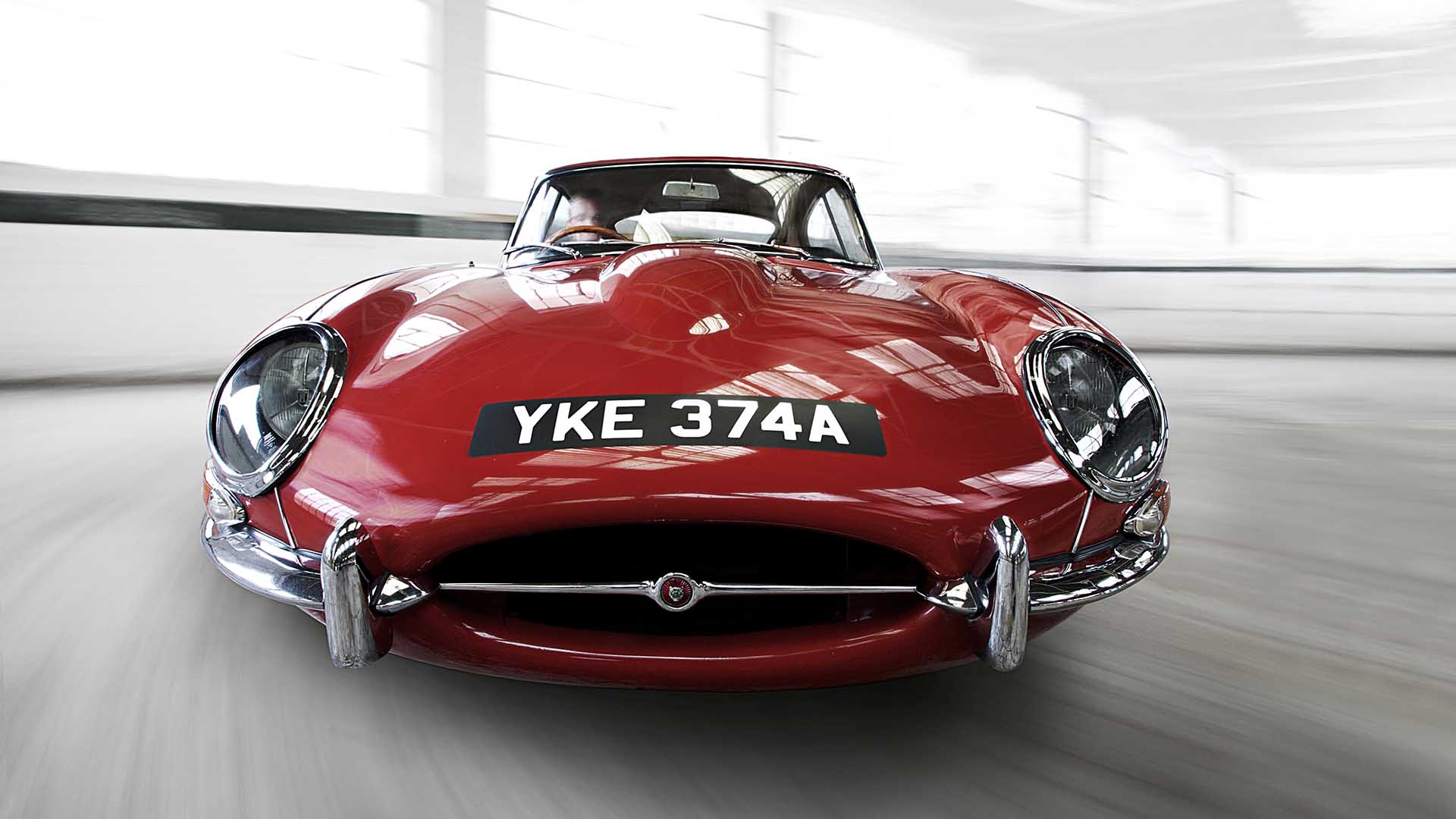
In the same letter, Jennings said: “It is a very beautiful machine and although ours was minus hood and headlamps these are most gracefully incorporated on the production prototype which I also inspected.” He went to speculate as to the car’s top speed. “I visualise a road test speed not very far short of 150mph, which is going to make us think.”
Development continues
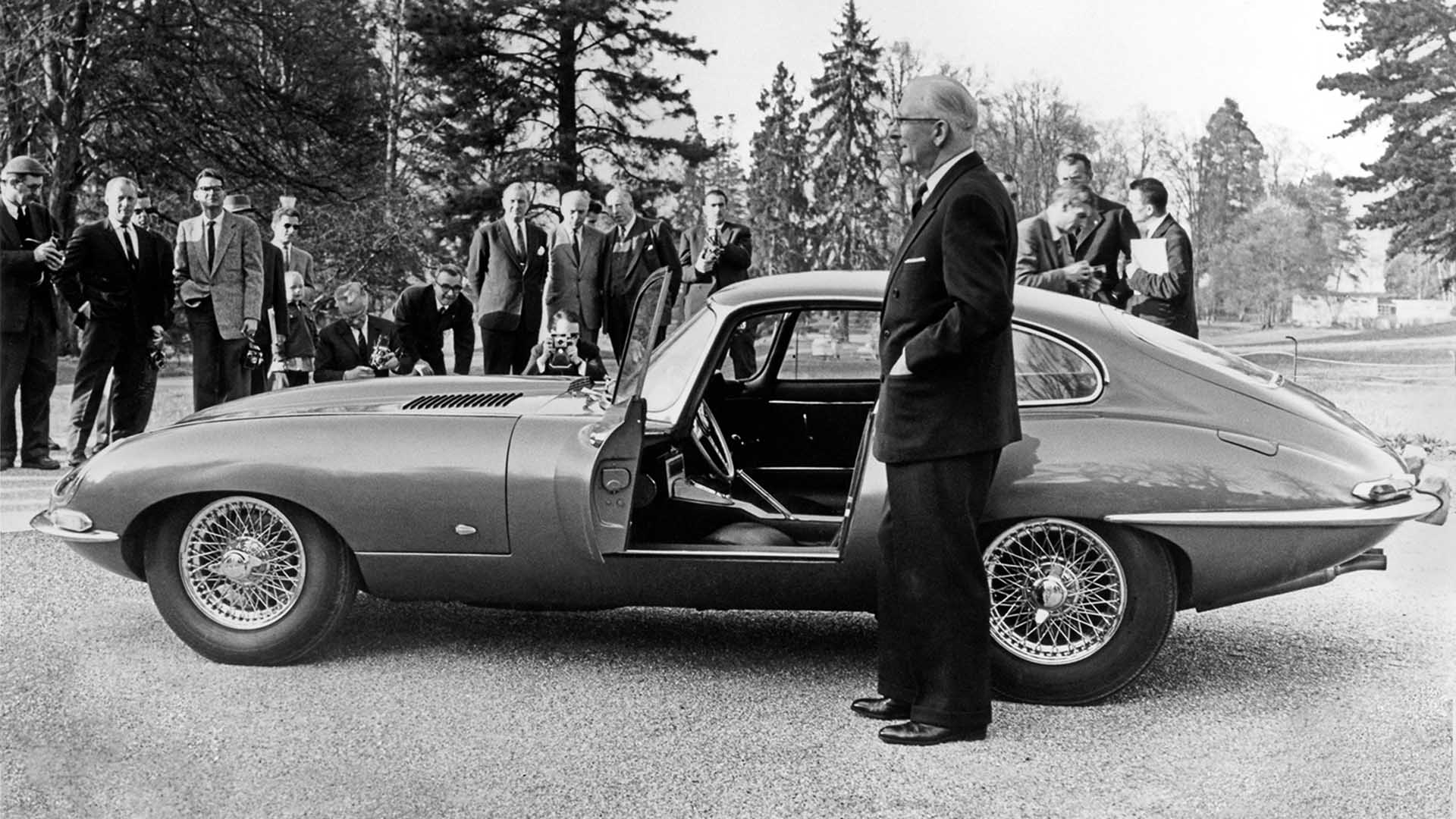
E2A looked more like the production version and was designed to compete at the 1960 Le Mans race. A 3.8-litre Weber carburetted engine was fitted before the car was sent to America, where it was raced by the Cunningham team. A victory in its first race at Long Island was to be its only win. Development continued until the production version was ready for its Geneva debut.
1961 Geneva Motor Show
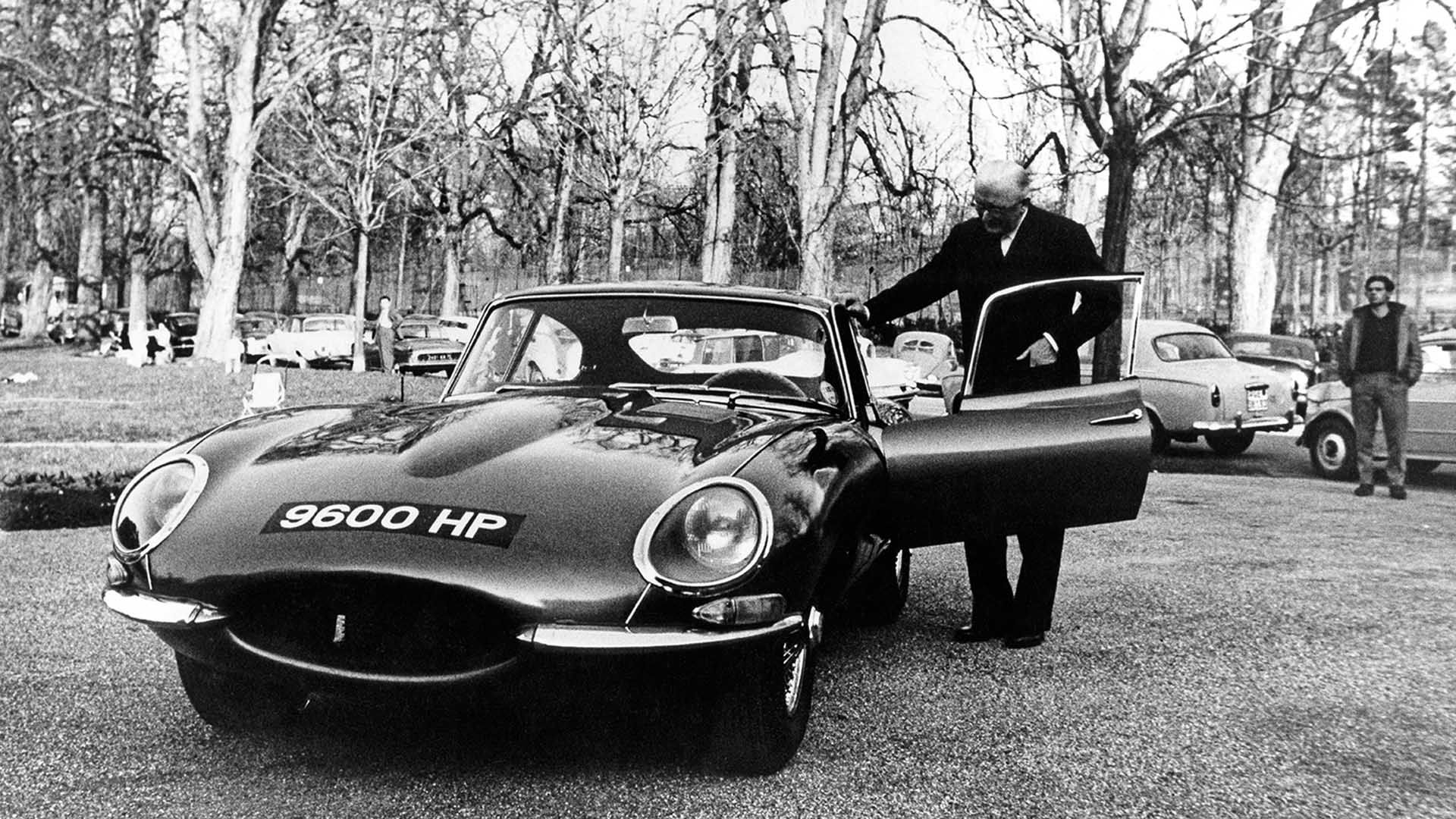
The stage was set for the Jaguar E-Type’s international debut at the 1961 Geneva Motor Show. On display was a Gunmetal Grey Fixed Head Coupe (FHC) with the registration number ‘9600 HP’. It had been driven “flat out” from Coventry to Switzerland the night before – PR manager Bob Berry arriving with moments to spare. Jaguar claims ‘9600 HP’ is the most photographed car in the world.
1961 Geneva Motor Show
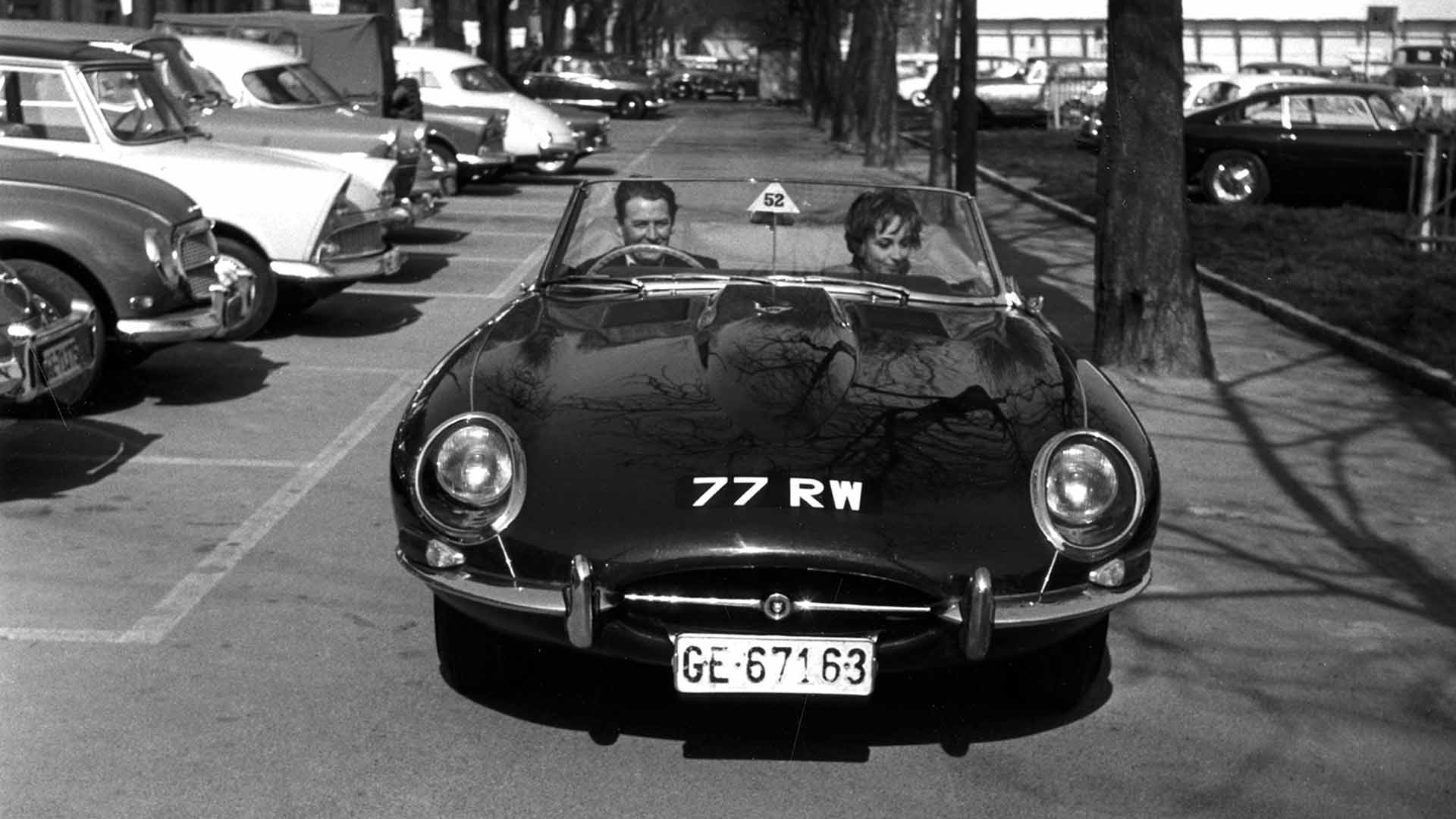
One car wasn’t enough. At the eleventh hour, Sir William Lyons contacted test driver Norman Dewis and told him to “drop everything” in order to get a British Racing Green OTS (Open Two Seater) to Geneva in record time. Dewis left immediately, driving through the night, arriving just in time to give ‘77 RW’ a wash at the local Jaguar dealer before unveiling the car to the expectant press.
A flood of orders
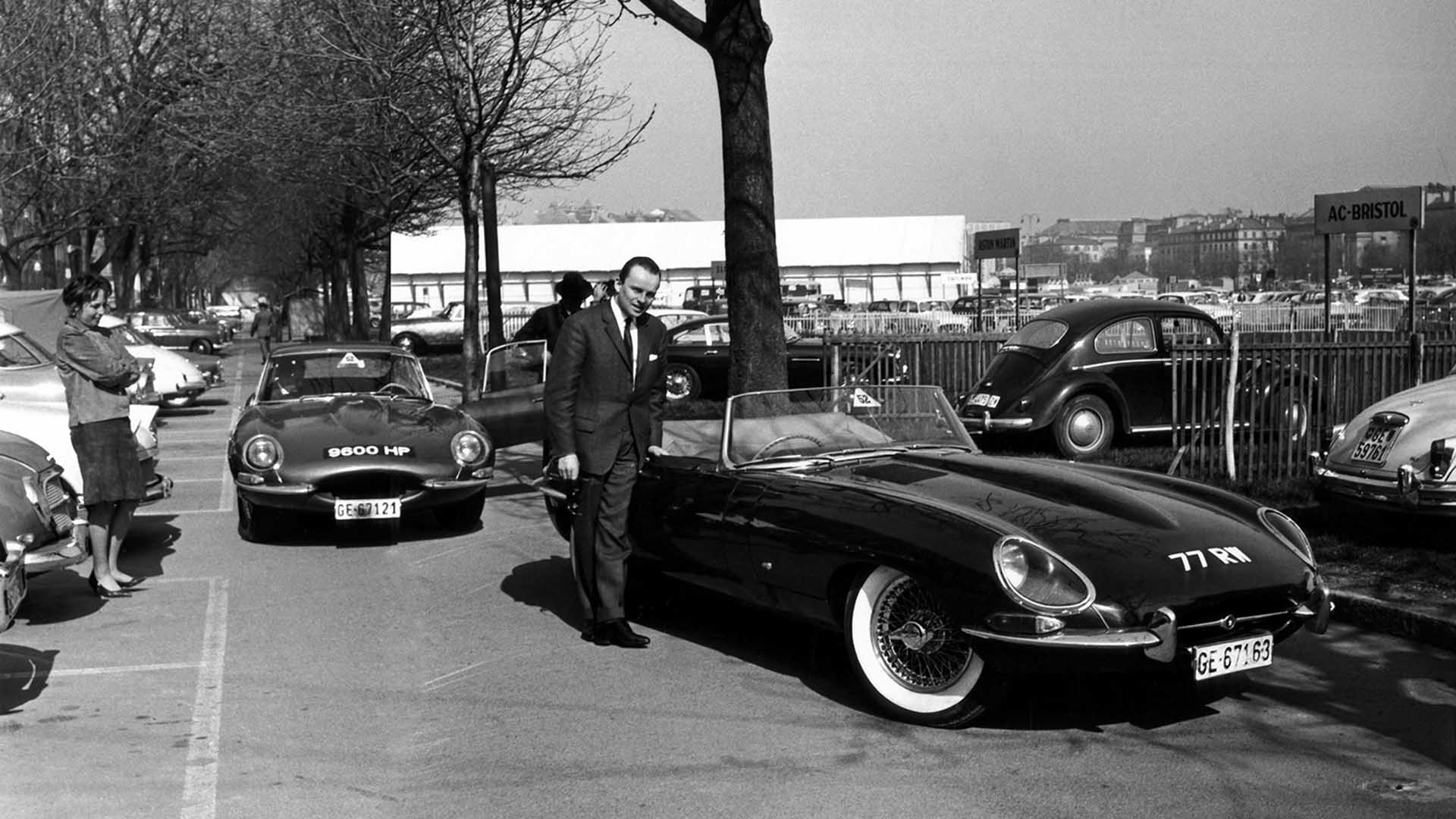
The Jaguar E-Type stole the show. Chairman Sir William Lyons said: “We have already received a flood of orders. I cannot give accurate figures at the moment because many dealers ordered the car unseen, while their orders have been coming in since the car was introduced to the public yesterday.” Film director Jacques Charrier, Brigitte Bardot’s husband at the time, flew in from Italy to secure the first personal sale.
Bargain hunt
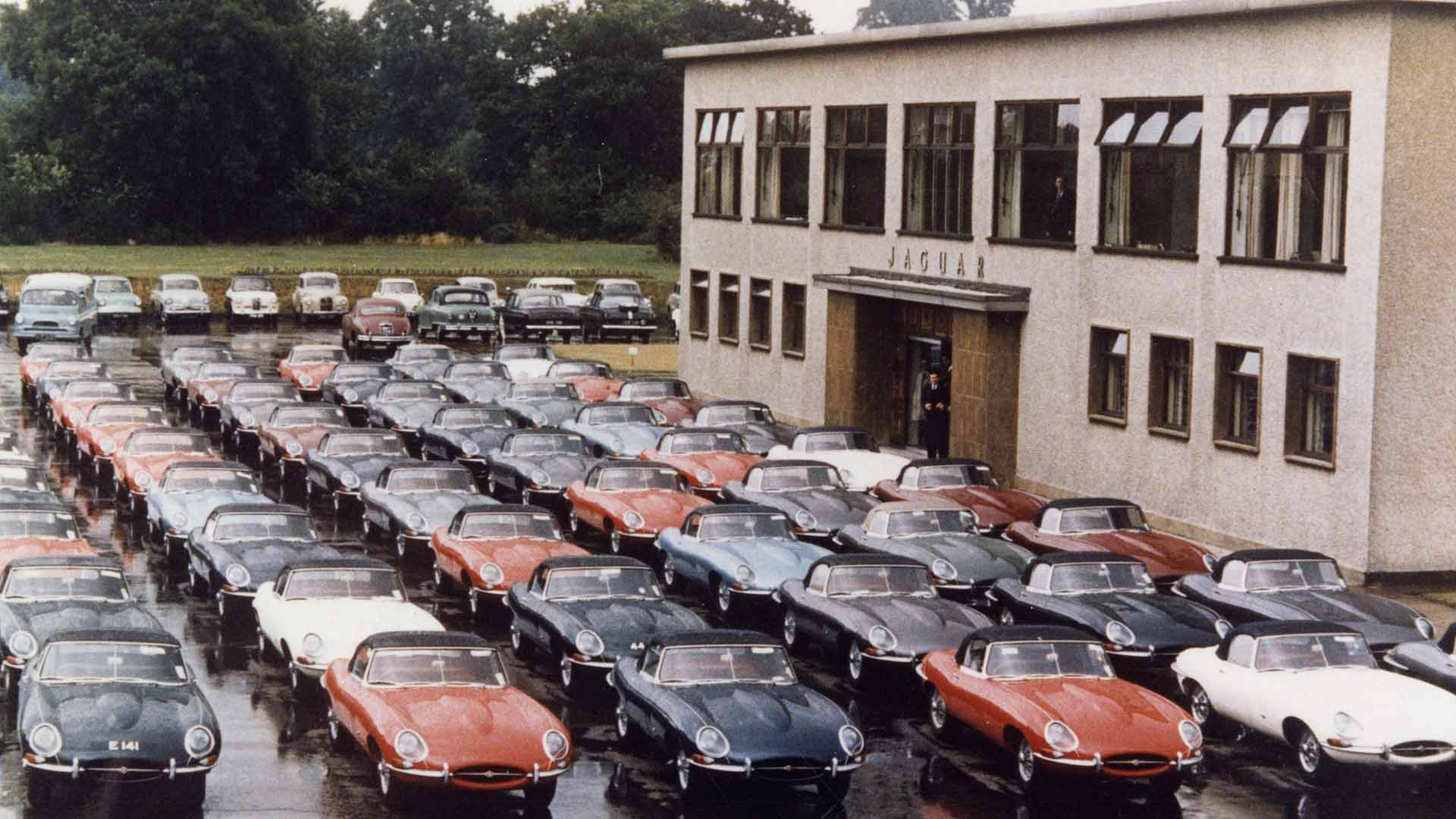
You’d be forgiven for thinking the Jaguar E-Type would have an extravagant price tag to go with its glamorous looks. On the contrary, an E-Type OTS cost £1,480, while the FHC cost £1,550. After taxes, this brought the figures up to £2,097 and £2,196 respectively. This made it cheaper than the outgoing XK150. A lot, considering the average cost of a house was £2,530, but this was less than a Ferrari, Aston Martin or Maserati. A top-spec family saloon cost in the region of £1,500, including tax.
Otherworldly
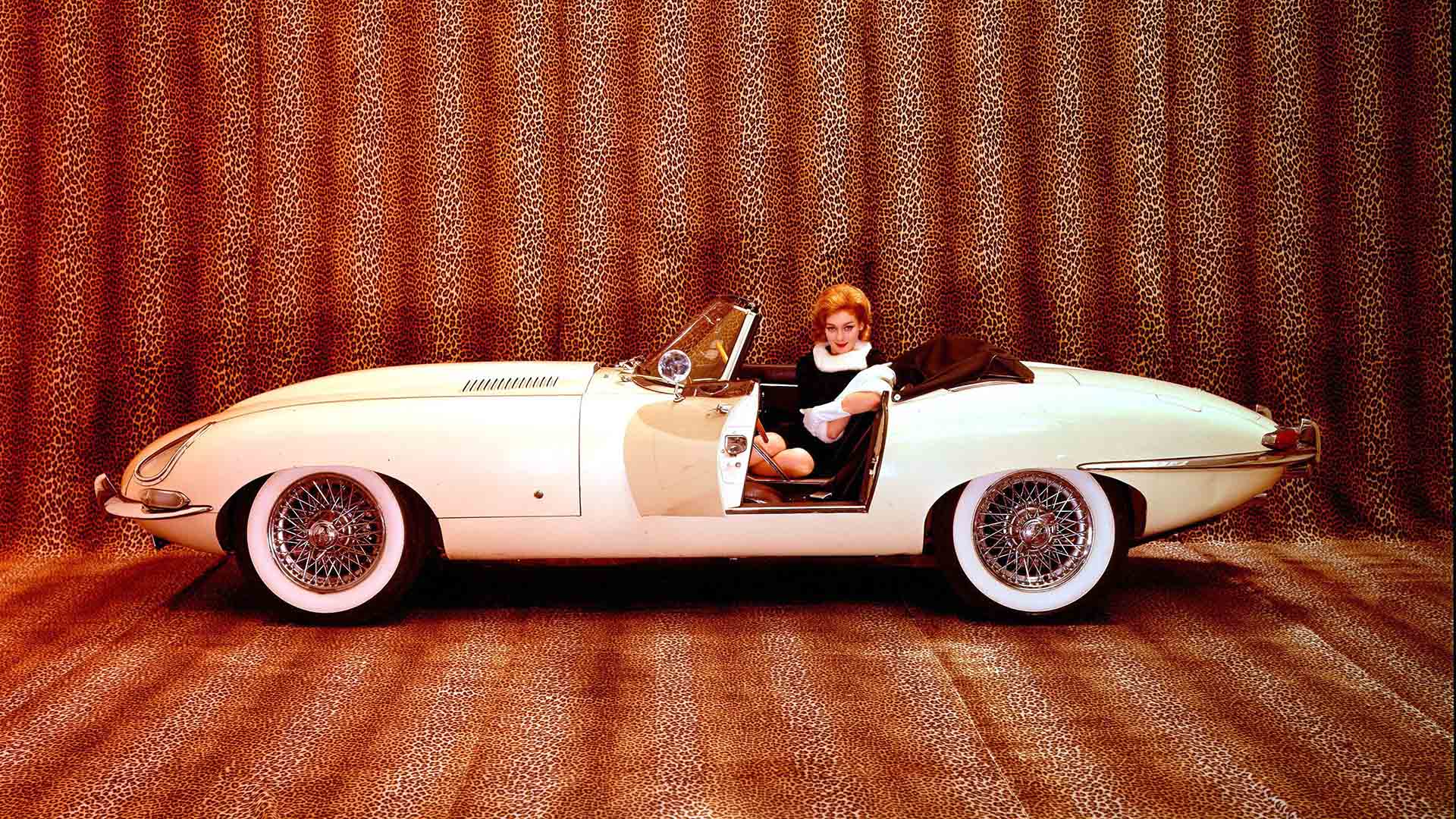
Sixty years on, it’s hard to comprehend what it would have been like to see a Jaguar E-Type on the road. It arrived before the Swinging Sixties, when the people of Britain drove around in cars with names like Victor, Hillman and Humber. It made a similar impression in the US, where it was known as the XKE. Road & Track said: ‘If a new car ever created greater excitement around our office than the new Jaguar XKE, we can’t remember it.’
World’s first 150mph hatchback
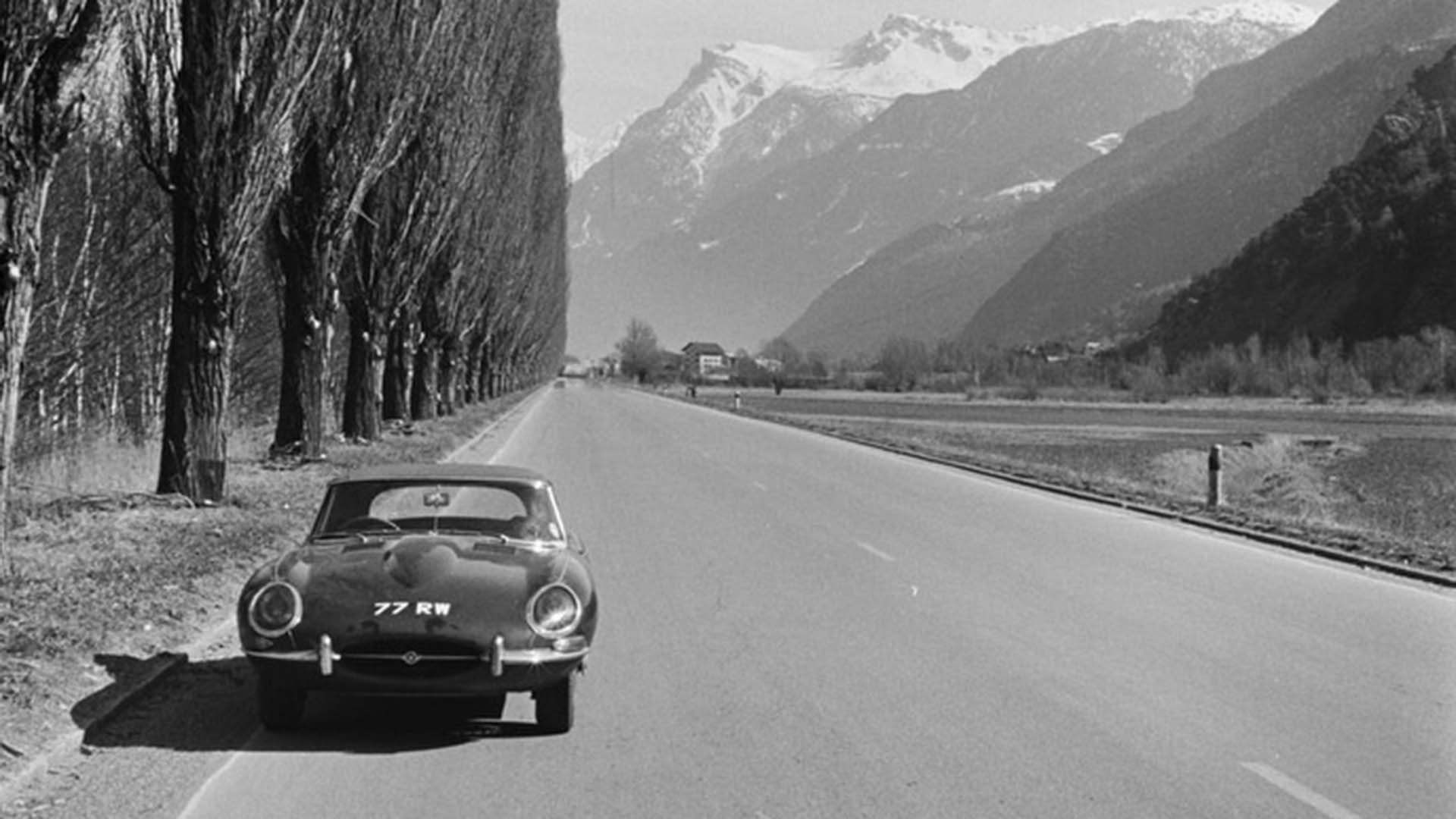
Much is made of the car’s 150mph top speed. Rightly so, especially when you consider that the average family car could barely manage 70mph in the early 1960s. However, the 150mph top speed was achieved in ‘77 RW’, a press car running on Dunlop R5 racing tyres. When the car was restored, it was found that the car had been tuned to produce an extra 20-25hp. Production versions couldn’t manage more than 140mph, but this didn’t stop the motoring press and Jaguar’s PR department from declaring it “The New 150mph Jaguar.”
Speed doesn’t matter
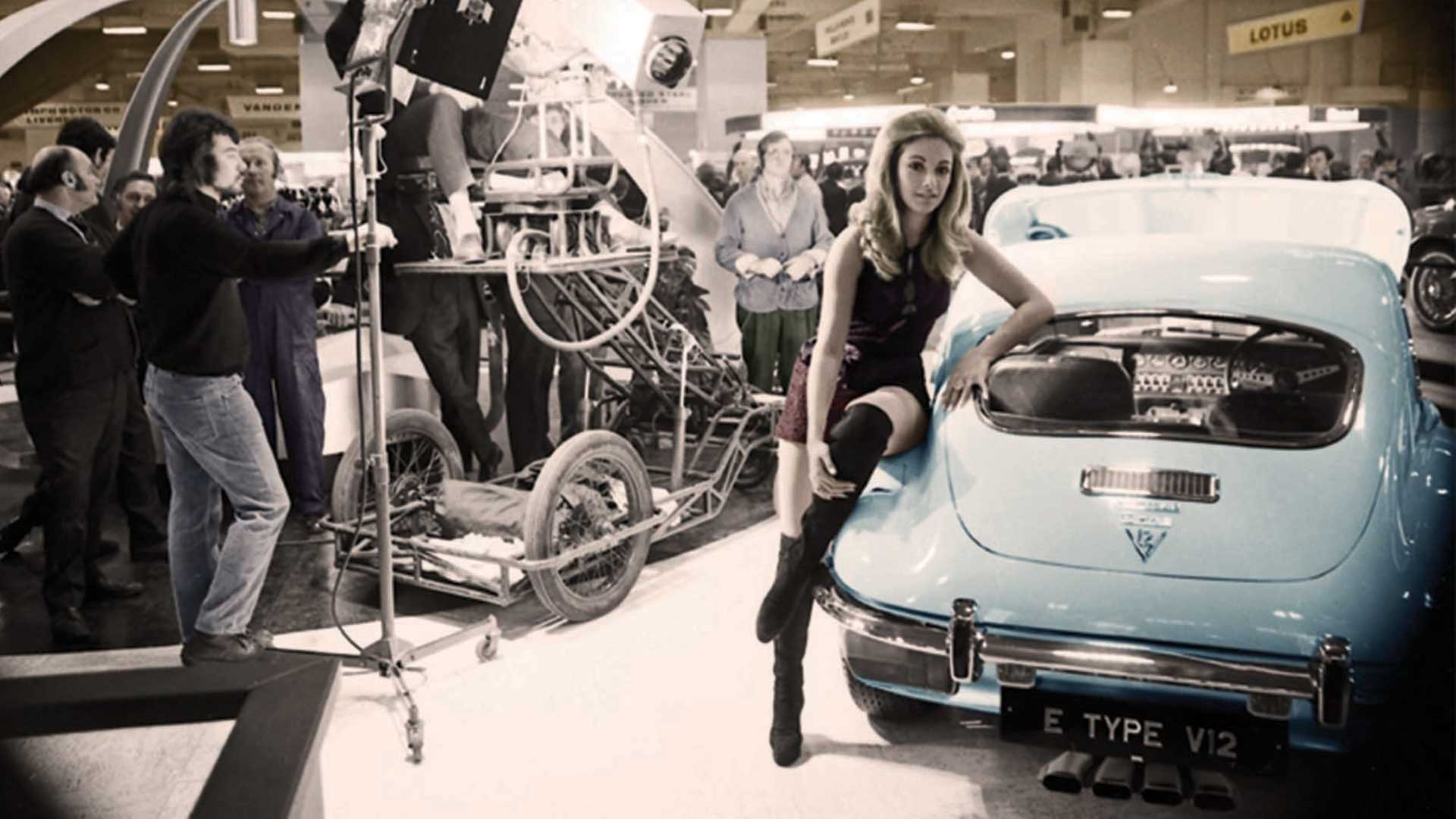
The Jaguar E-Type would have been a success, even without the claimed top speed. It looked sensational, which encouraged the likes of Grace Kelly (Princess Grace), Steve McQueen, Frank Sinatra, Britt Ekland, George Harrison, Tony Curtis, Donald Campbell, George Best, Roy Orbison, Charlton Heston and Count Basie to part with their cash. Upon seeing the E-Type for the first time, Sinatra said: “I want that car and I want it now.”
The perfect sports car?
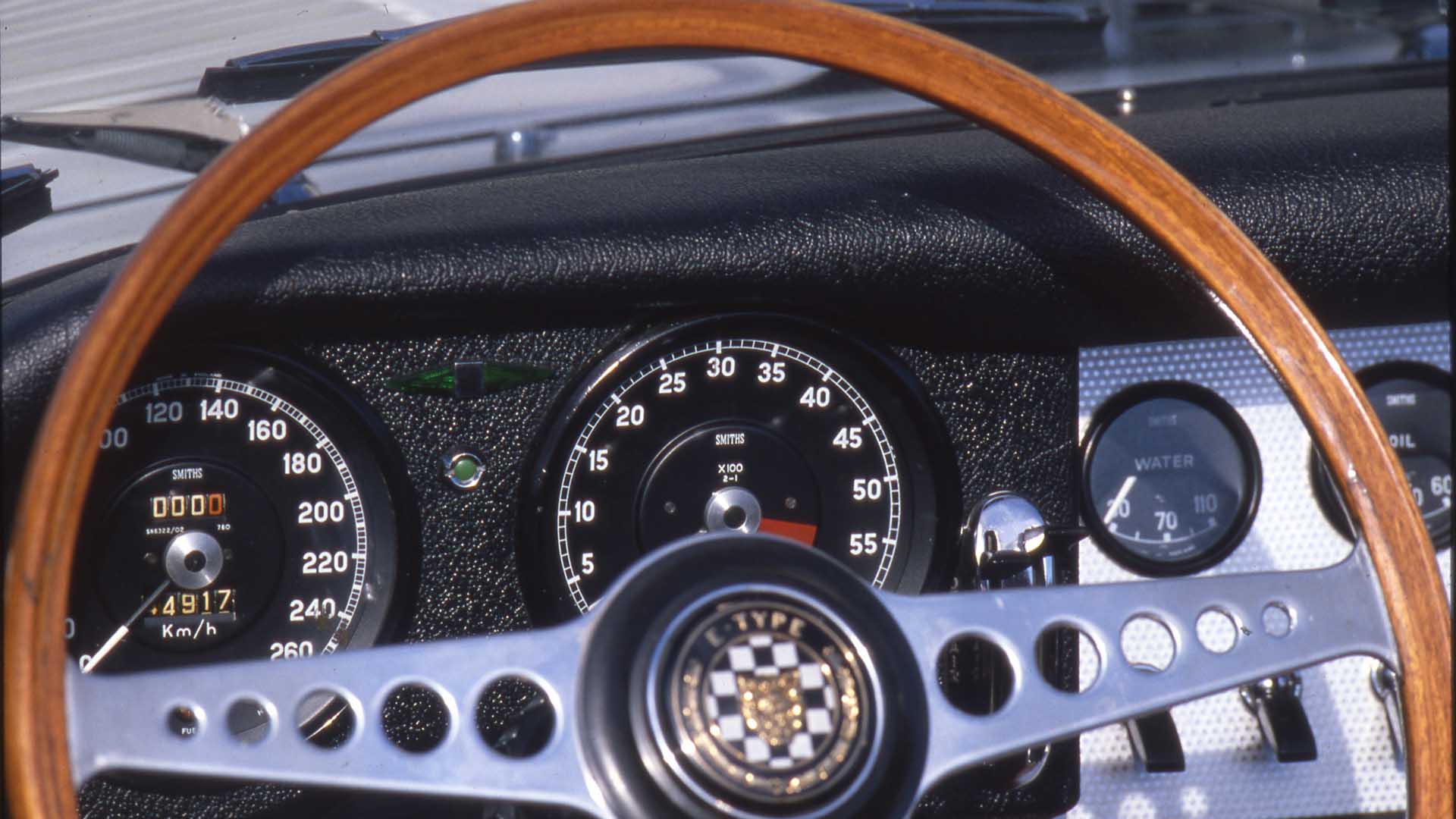
Its beauty was more than skin deep. The E-Type featured independent rear suspension and all-round disc brakes, at a time when drum brakes were the norm. Sure, the 3.8-litre engine was derived from a unit first used in 1948, while the chassis was a development of that used in the D-Type, but it was almost the perfect sports car. But not quite. The E-Type was too cramped inside, there was no synchromesh on first gear, the brakes were poor and the seats were uncomfortable on long trips.
New engine and greater comfortable
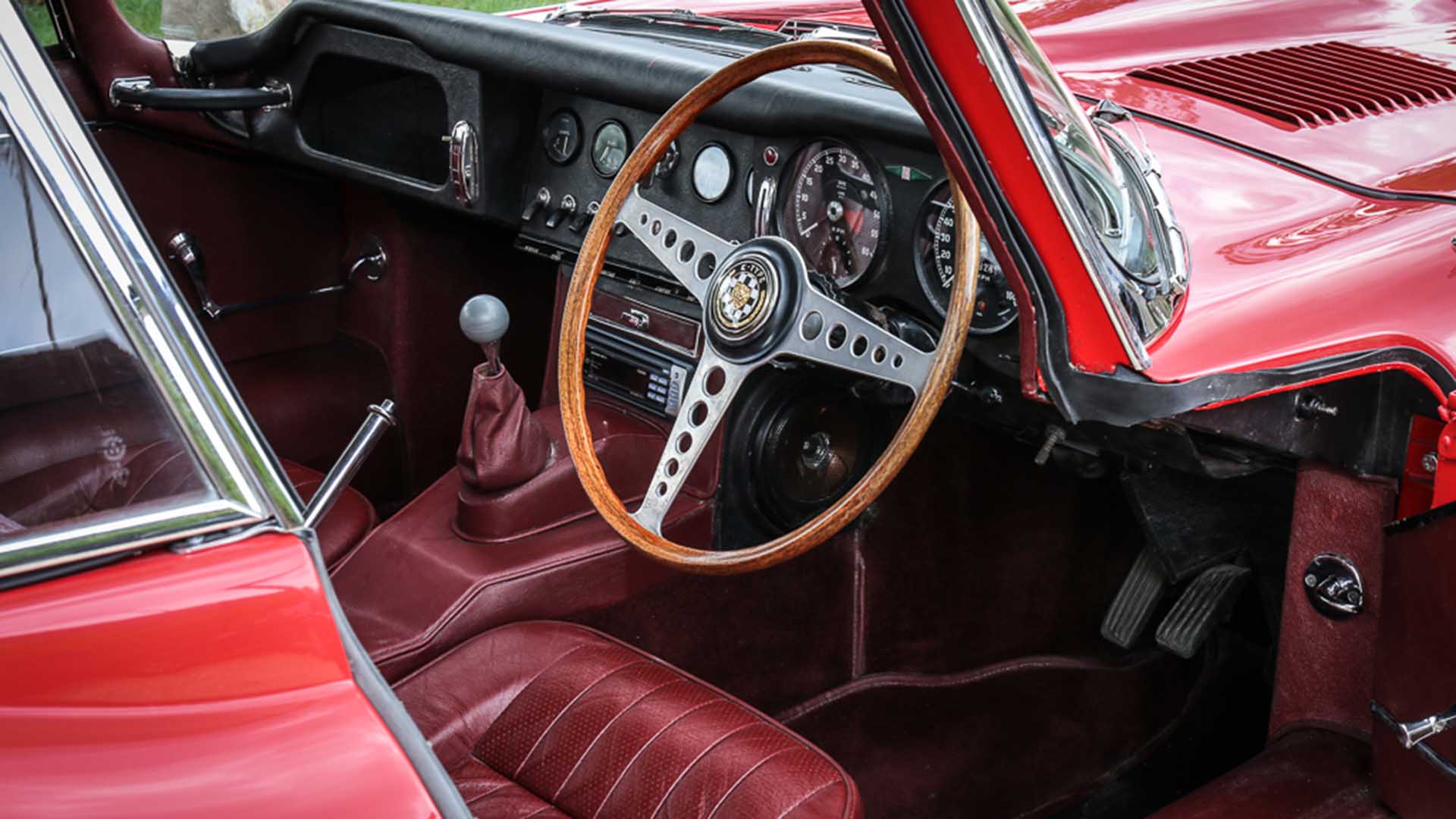
The first significant development of the E-Type came in 1964, when Jaguar introduced a 4.2-litre and an all-synchromesh four-speed gearbox. There was also a new matt black dashboard and more comfortable seats. Crucially, the E-Type could now hit 150mph without clandestine tuning, with owners free to enjoy this speed before the 70mph limit was enforced on Britain’s motorways in November 1965.
Jaguar E-Type 2+2
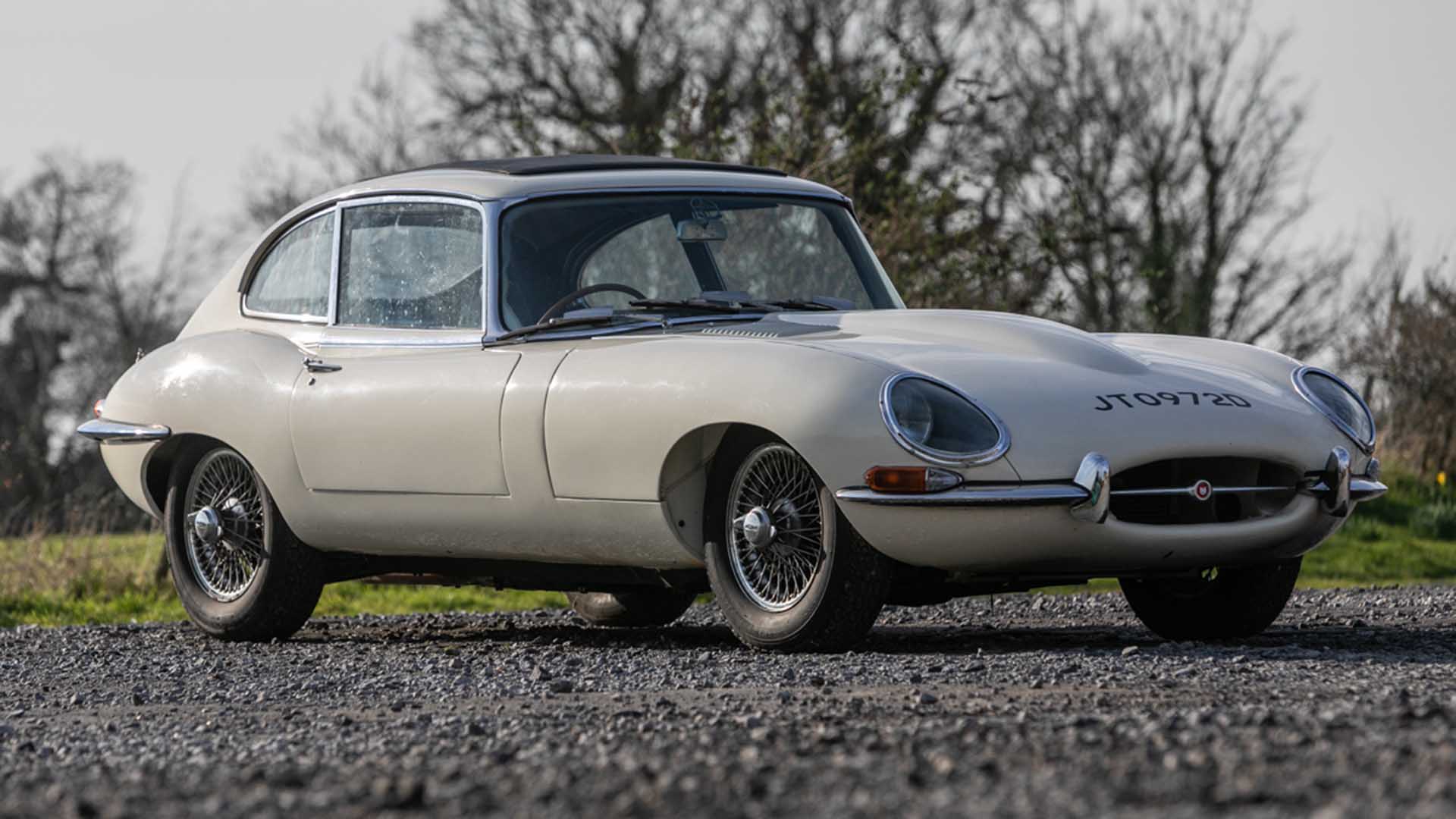
Jaguar received many complaints from owners demanding more interior space. Their prayers were answered in 1966 with the arrival of the E-Type 2+2. Nine inches longer than the standard E-Type, the 2+2 also featured a taller windscreen and longer doors, making it ideal for couples with children. An automatic gearbox was now an option. It helped the E-Type to achieve its best year to date, with 6,880 cars leaving the factory.
An American influence
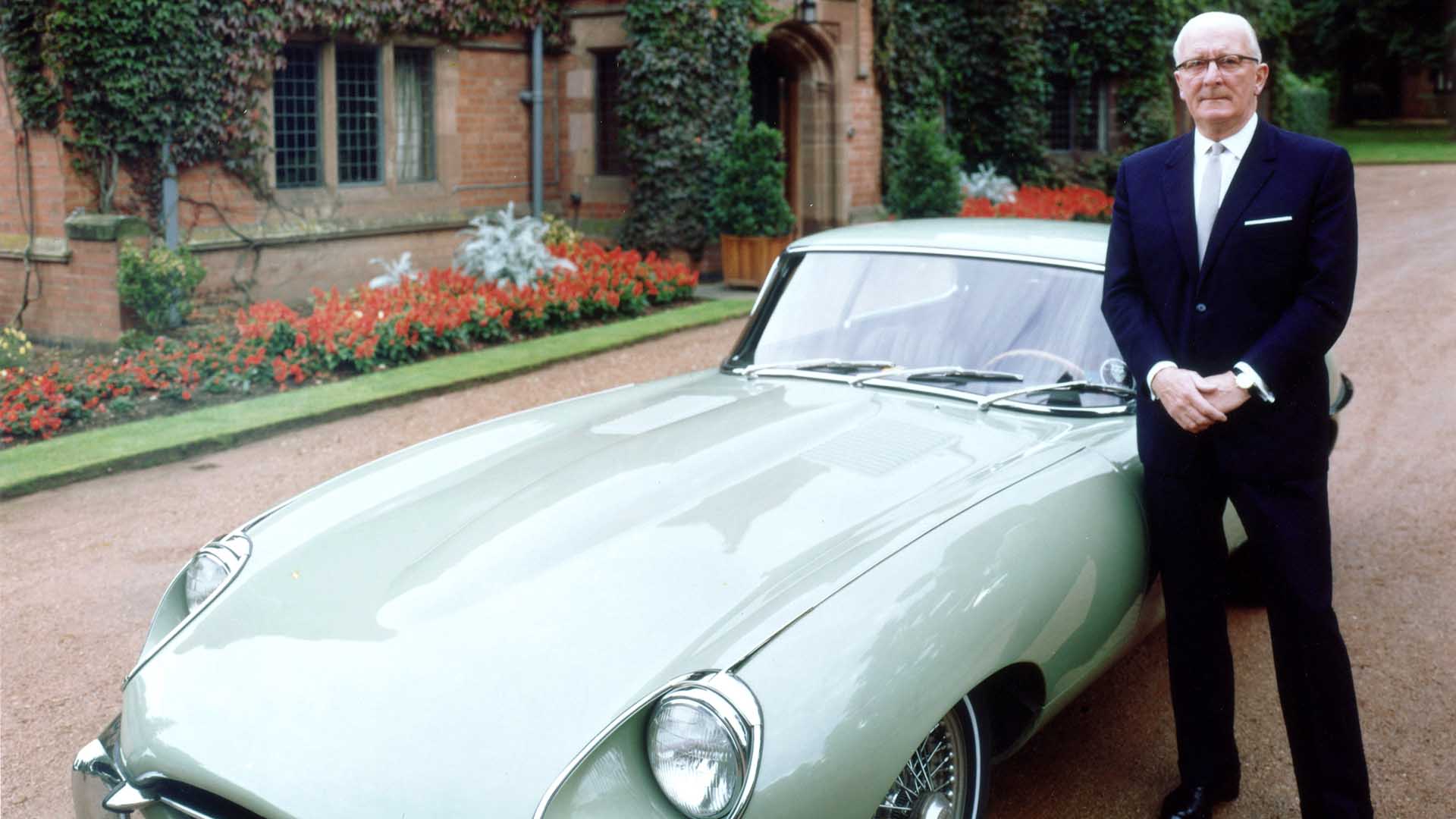
America was a big market for the E-Type (XKE). It also influenced the removal of the E-Type’s famous perspex headlight covers, which was one of 21 changes required to satisfy US safety regulations. This created what has become known as the Series 1A½, which also benefited from better brakes. Sales slumped to 4,989 in 1967, partly because of a US recession. This photo shows former Jaguar boss Sir William Lyons.
Jaguar XJ6
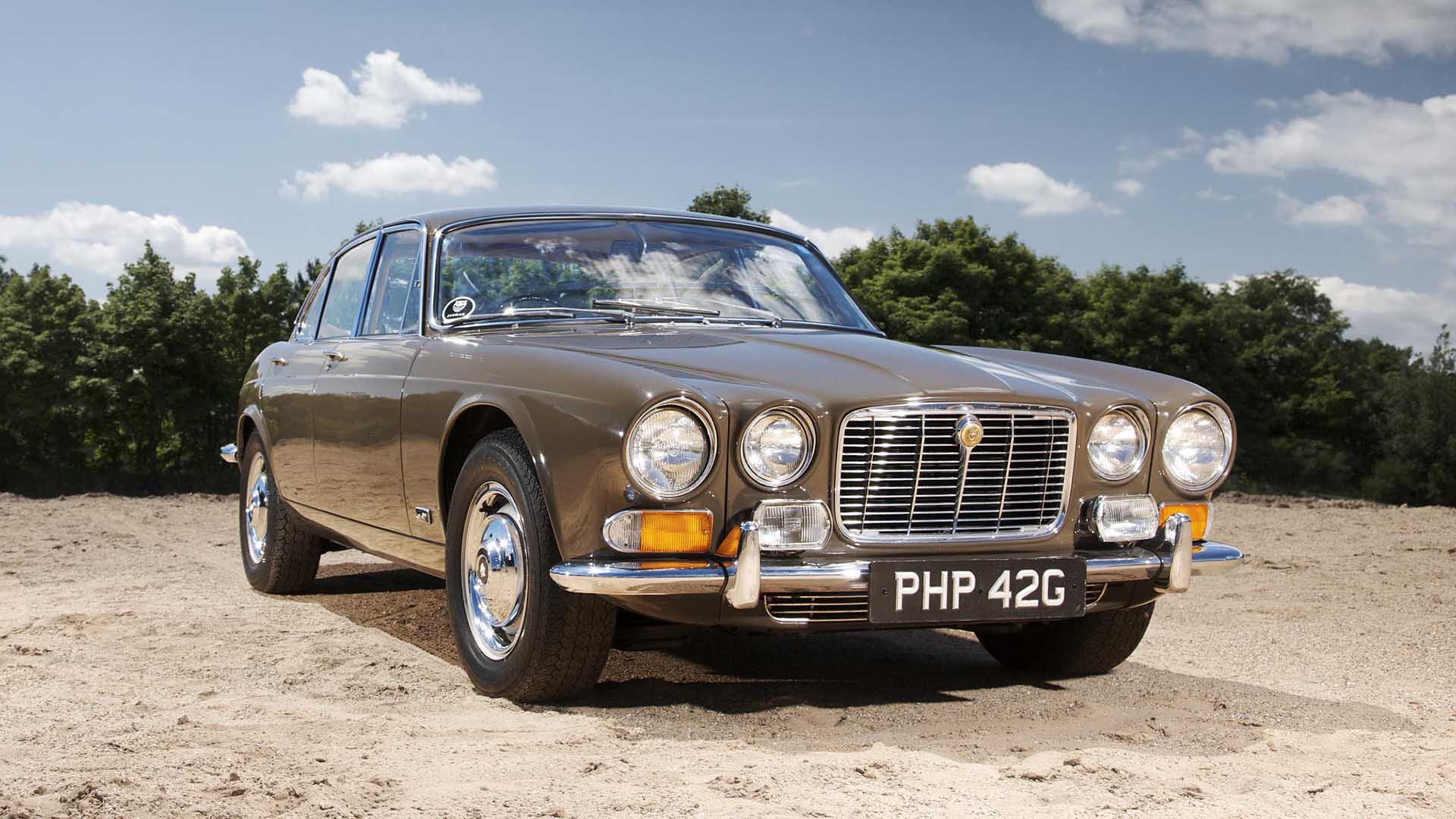
While the E-Type was making womens’ dresses fall off, Jaguar was preparing for the launch of its next significant car. Work started on the XJ saloon in 1963/64, before the car was unveiled at the 1968 British Motor Show. Its launch coincided with Jaguar and the British Motor Corporation (BMC) being merged into British Leyland. Only two years earlier, Jaguar had merged with BMC.
Series 2 E-Type
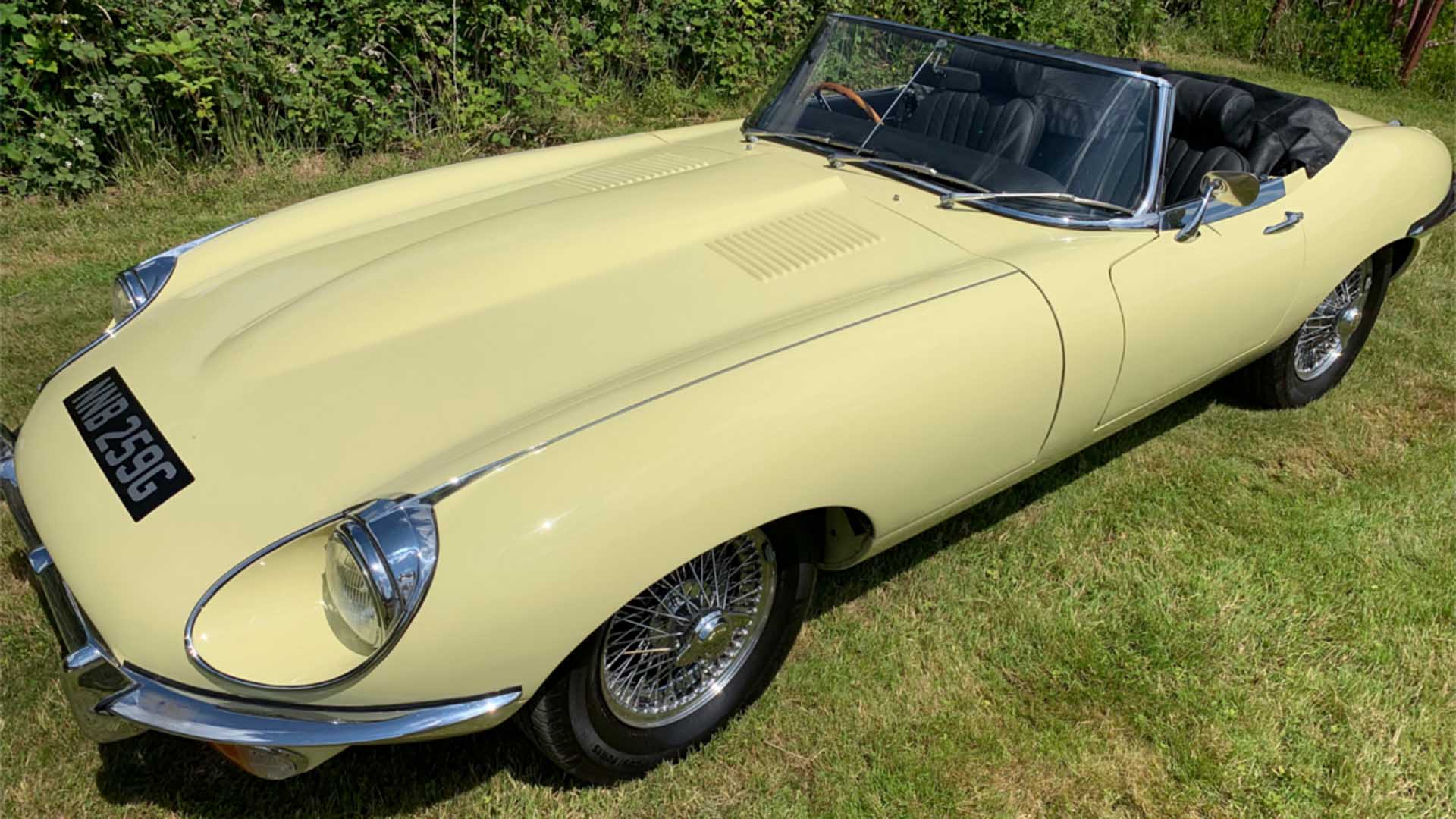
October 1968 saw the official launch of the Series 2 E-Type at the Earls Court Motor Show. Changes included a bonnet redesigned for a 68 percent larger mouth, two electric fans, sturdier bumpers, larger indicators and rear lights, plus the option of air conditioning and power steering. The styling of the 2+2 was improved thanks to a redesigned windscreen. The cost of meeting US Federal Safety Regulations amounted to around £250,000 – around £4.4 million in today’s money.
Series 2 E-Type
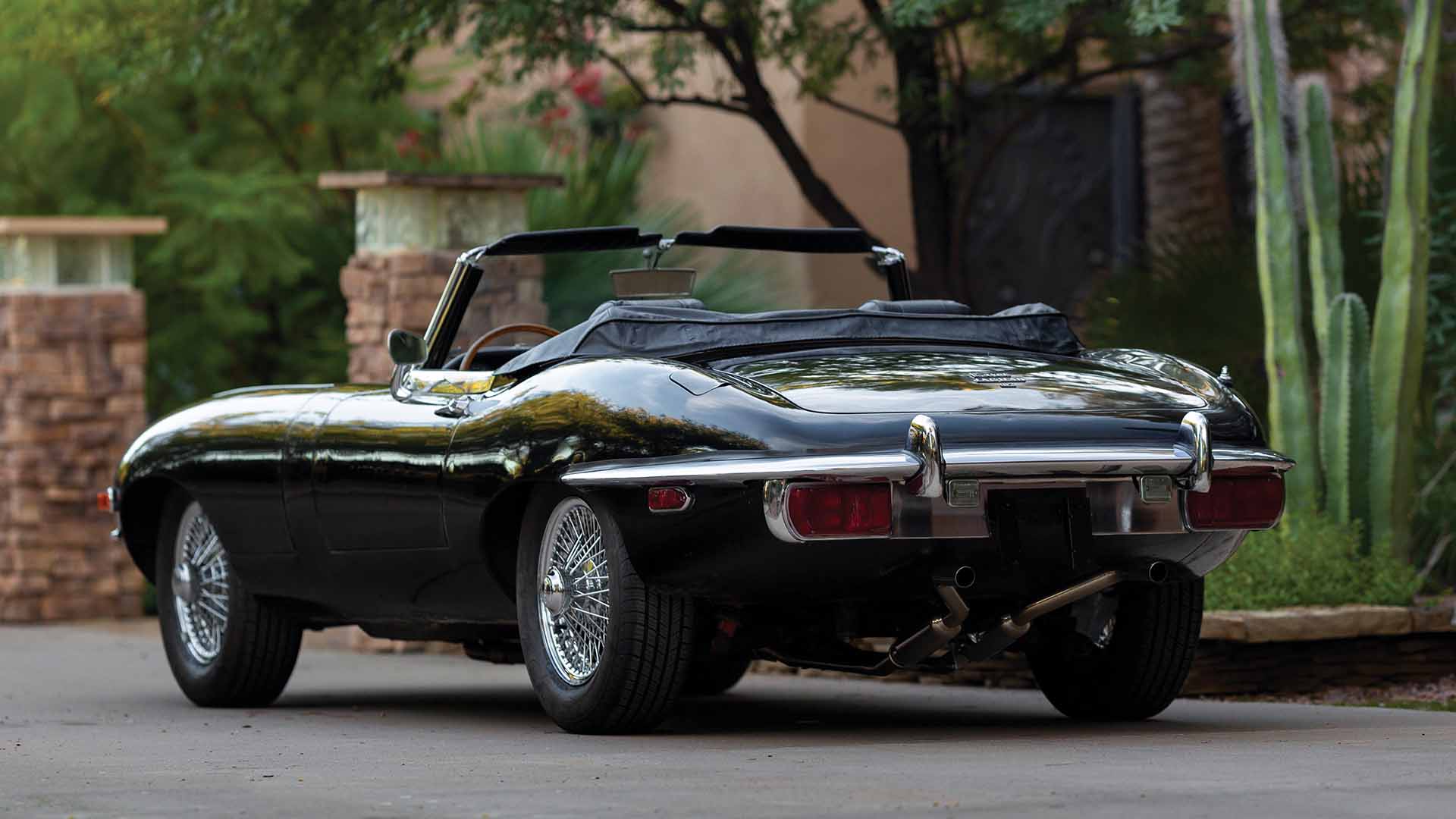
The Series 2 E-Type saw few changes in its lifetime. While its beauty remained, the E-Type was losing some of its lustre, as highlighted by a 1969 US satisfaction survey. Owners complained of poor reliability including, rather shockingly, body parts falling off. Overheating was a constant menace, especially in warmer countries. Industrial unrest and strikes in the car’s home market didn’t help its cause. By May 1970, production had slowed to 250 cars a week.
Series 3 E-Type
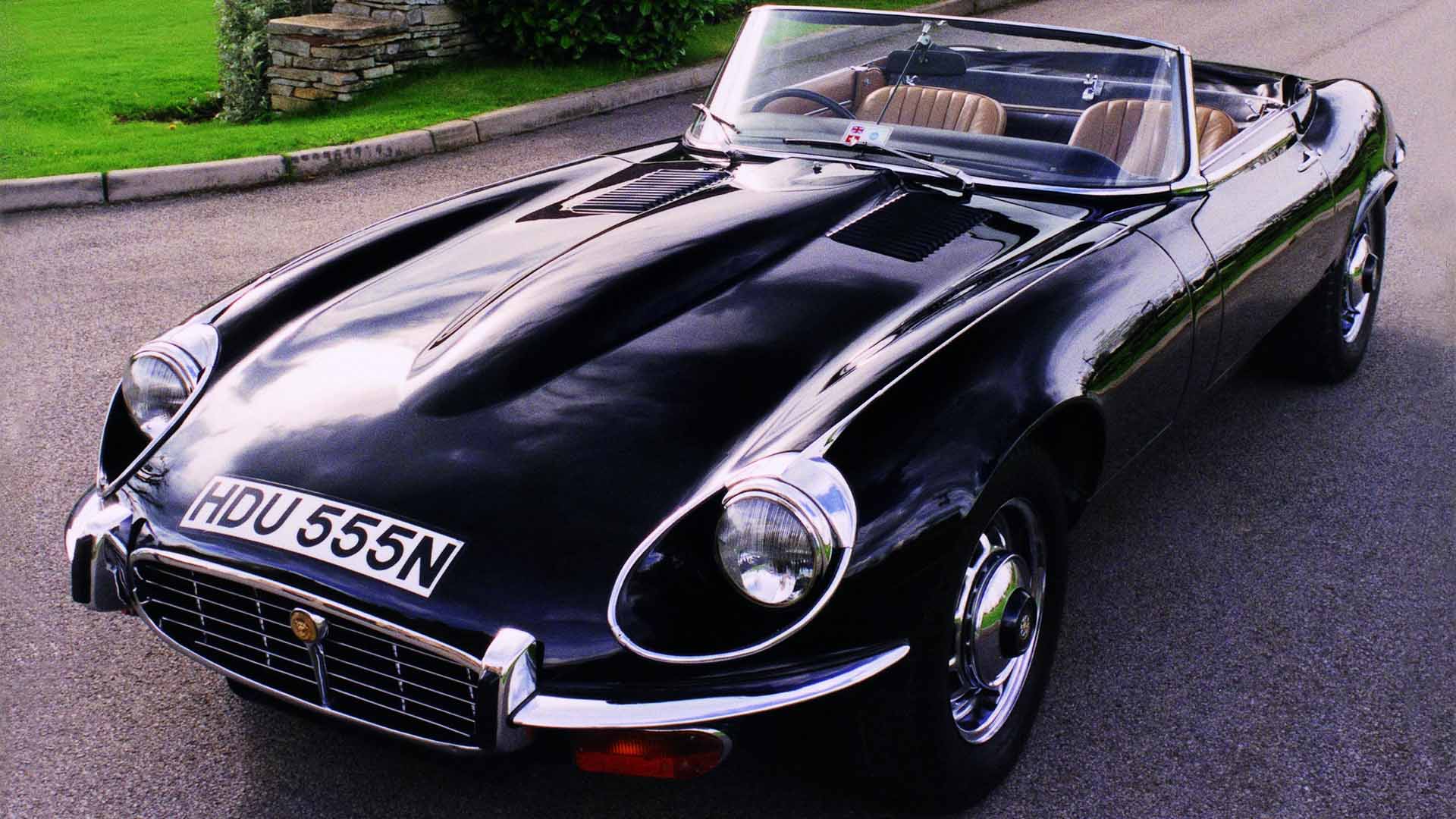
Like so many British cars of the era, the E-Type’s problems in later life could be attributed to British Leyland’s ownership of Jaguar. That said, BL oversaw the most significant facelift of them all and the insertion of a 5.3-litre V12 engine. The Series 3 was unveiled at the 1971 New York Auto Show. It was the last hurrah for the fading star. Eighty-three percent of E-Type production had been exported, with the US taking 49,032 cars. A mere 12,320 remained in the UK.
From B-roads to Boulevards
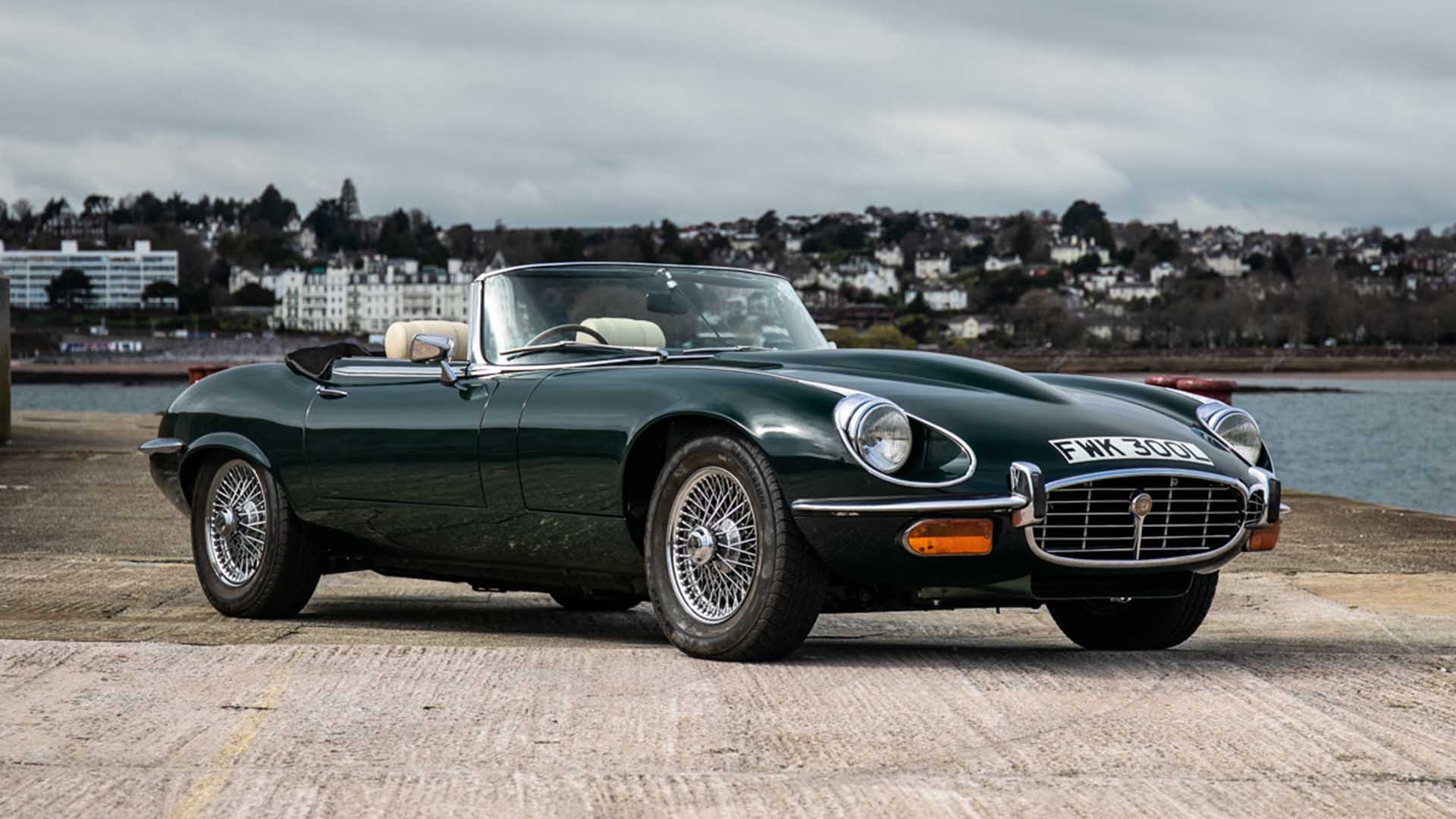
The E-Type had evolved from a B-road sports car into a boulevard cruiser. The Series 3 was longer, wider and 22 percent heavier than the Series 1. There was more chrome, a larger mouth, flared wheelarches and, for the first time, a grille on the car’s famous nose. Motor Sport christened it a “decorative birdcage”. The 2+2 long wheelbase was now standard across the range, which meant only the 2+2 and roadster survived.
Separated at birth?
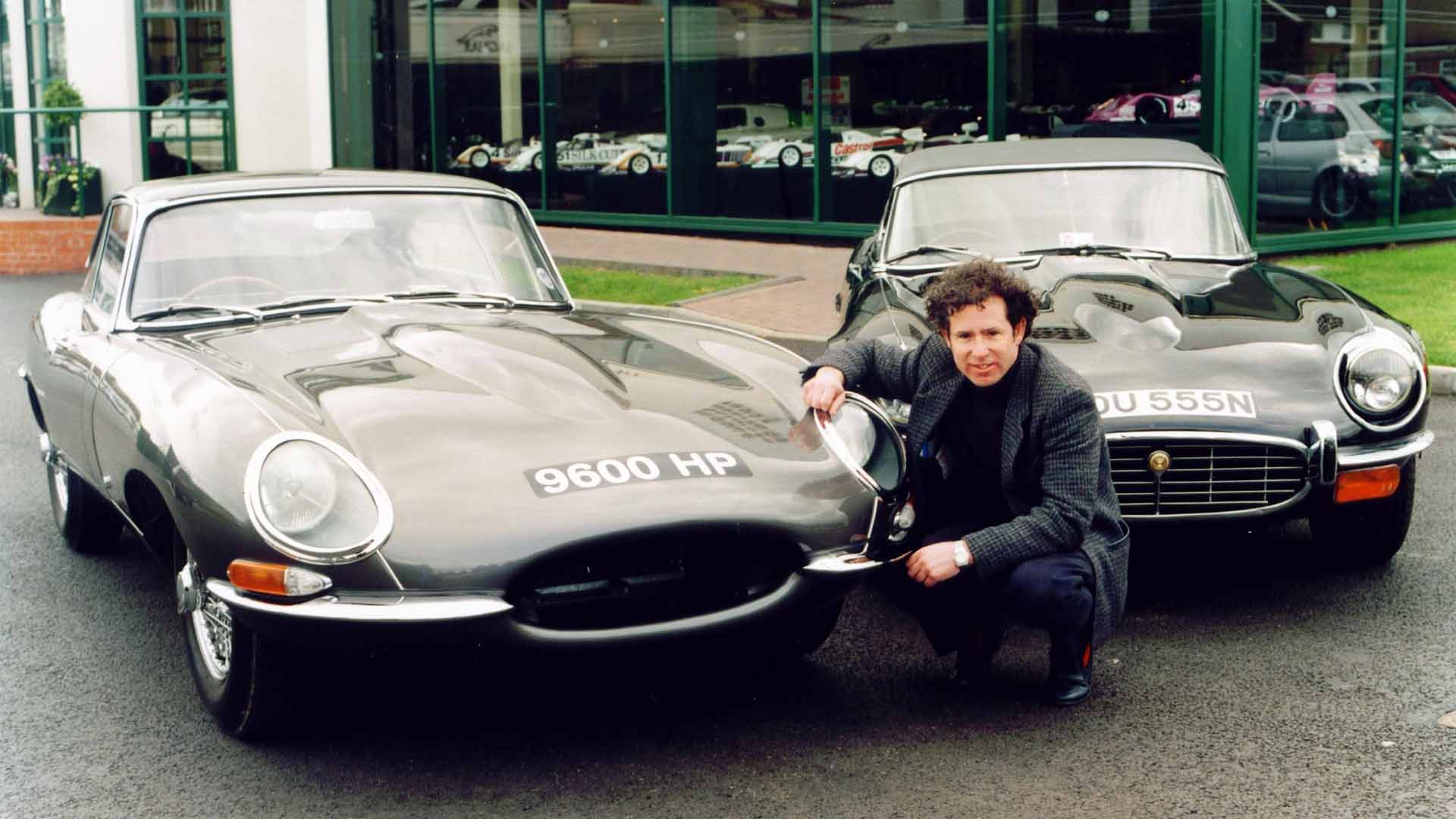
Stick a Series 3 alongside a 1961 original and the 1970s E-Type will always be facing a losing battle. It’s a car hamstrung by safety regulations, tarnished by industrial unrest and overshadowed by its beautiful sibling. In isolation, it remains a fabulous grand tourer, with the V12 engine delivering incredibly smooth performance. A case of the right engine in the wrong body, perhaps?
HDU 555N
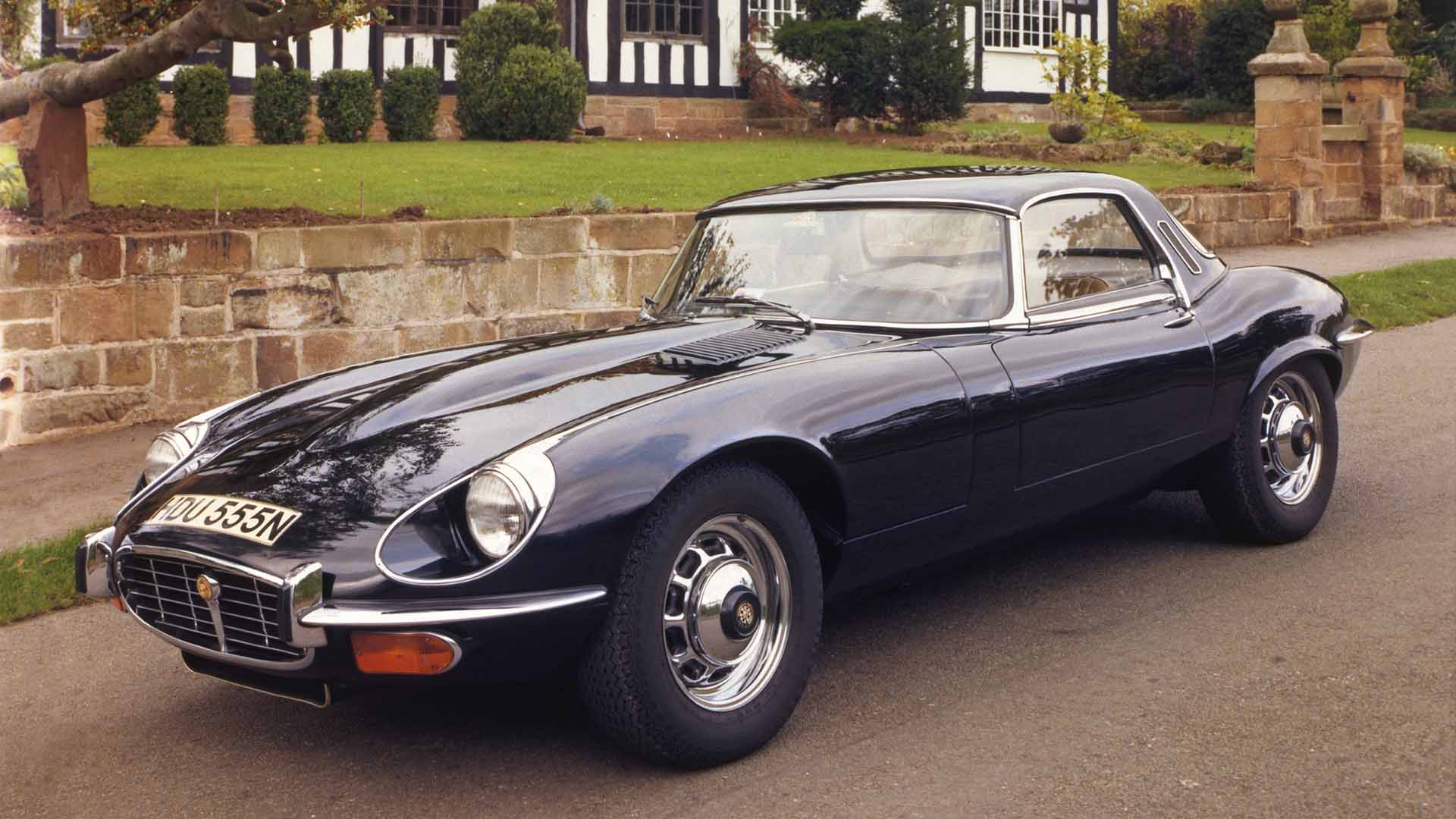
The ailing cat was put out of its misery in 1974. The looming energy crisis and the threat of even stricter US safety regulations meant that time was up. ‘HDU 555N’ was the last of 72,233 E-Types to be produced from 1961 until 1974. Jaguar marked the occasion with 50 right-hand-drive Commemorative models, with all but one finished in black. The one exception was a British Racing Green model ordered by Jaguar collector Robert Danny.
The legacy lives on
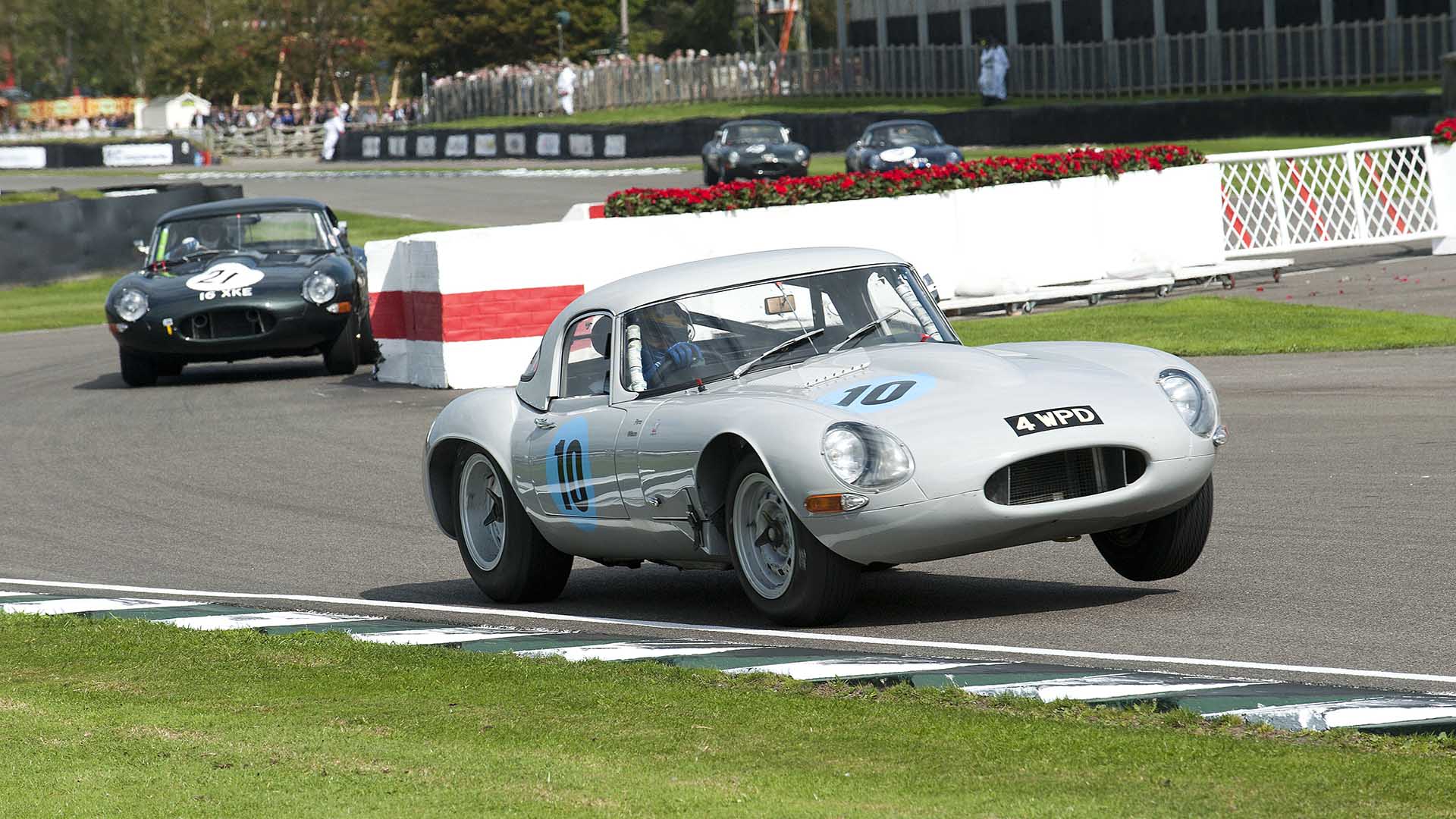
While this history focuses on the road-going cars, the Jaguar E-Type enjoyed moderate success on the track, albeit without reaching the heights of the D-Type and C-Type. To some, the Lightweight is the definitive competition E-Type. Originally built in 1963, these models featured aluminium bodies to improve performance, but only 12 of the original 18 were ever made. In 2014, Jaguar said that it would be building six £1 million Lightweight models to the original specification.
Jaguar E-Type Zero
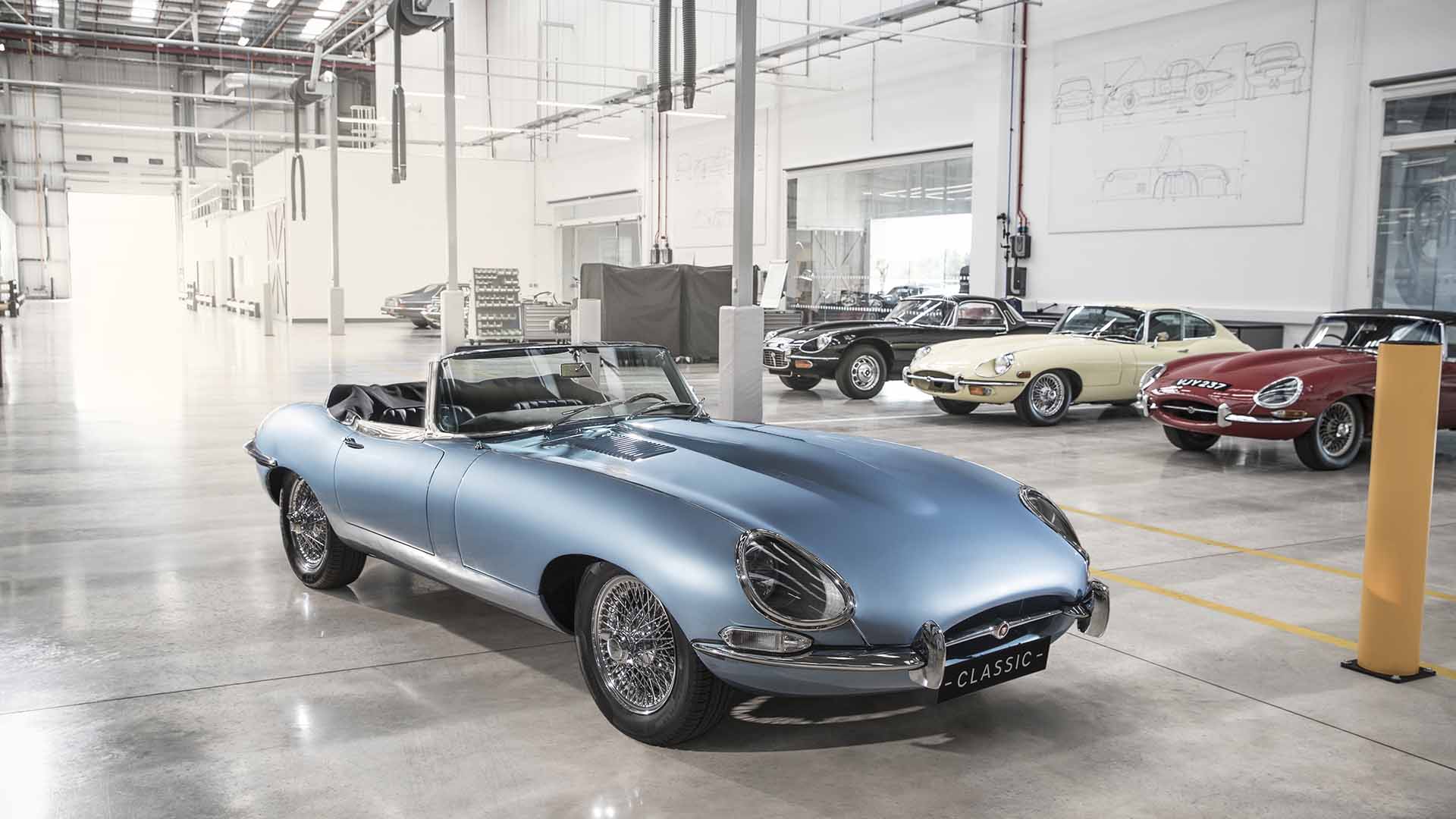
In 2018, Jaguar announced that it was putting the all-electric E-Type Zero into production. Using electrical parts from the I-Pace SUV, Jaguar said ‘it drives, handles, rides and brakes like an original E-Type’. Deliveries of the £350,000 car were scheduled to begin in the summer of 2000, but the plans were put on hold due to the ‘current global commercial climate’. The car was famously used by the Duke of Sussex to drive the Duchess to their wedding reception.
Jaguar XJ-S
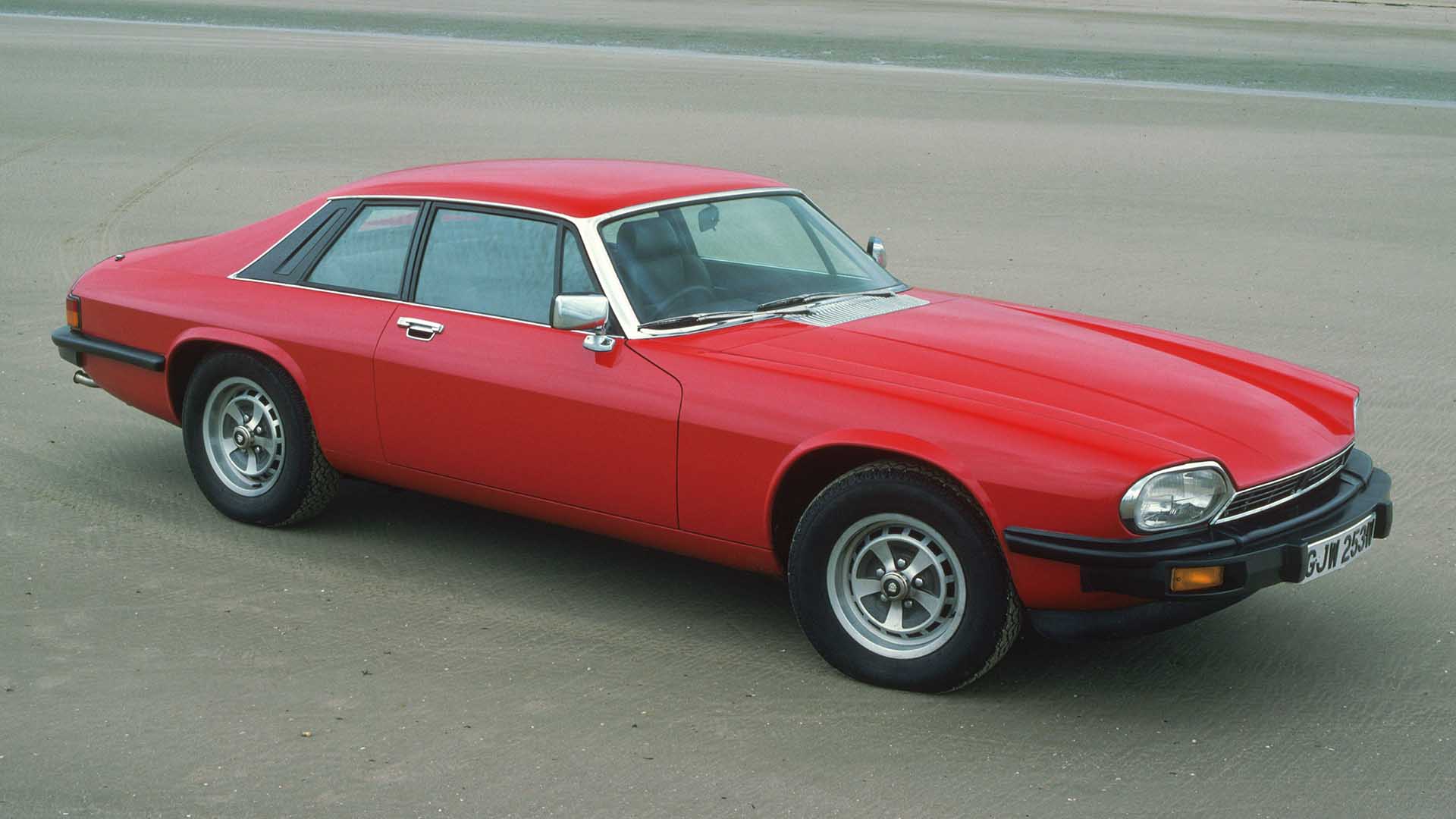
For Jaguar, the E-Type must have been a blessing and a curse. How do you follow a car that captured the public’s imagination quite like the E-Type? It’s a national treasure. A car that transcends the automotive industry and gatecrashes popular culture. The Jaguar XJ-S faced the impossible task: the ‘difficult second album’ syndrome. In many ways, the story of the XJ-S (later the XJS) is the reverse of the E-Type. Jaguar refined and improved the XJ-S, while the E-Type grew old and flabby.
The Eagle has landed
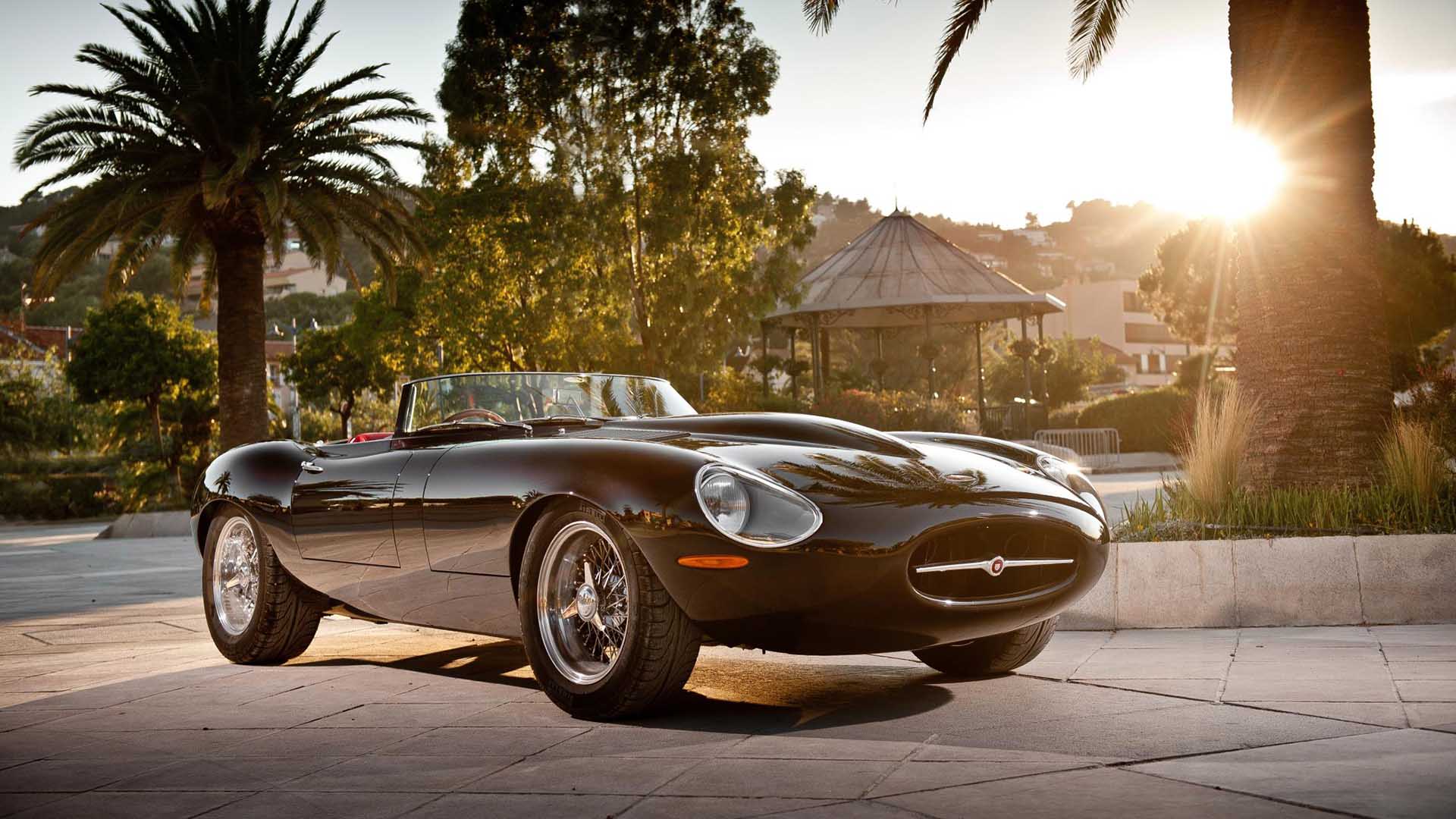
One could argue that Eagle E-Types, a small company in Sussex, perfected the E-Type. When reviewing the Eagle Speedster for Top Gear, Jeremy Clarkson said: “If someone had come to me asking for planning permission to alter an E-Type Jaguar I’d have said no, don’t be stupid, you’ll mess it up. But… they haven’t… I think this, by a long way, is the most beautiful car I’ve ever seen.”
Sixty years young
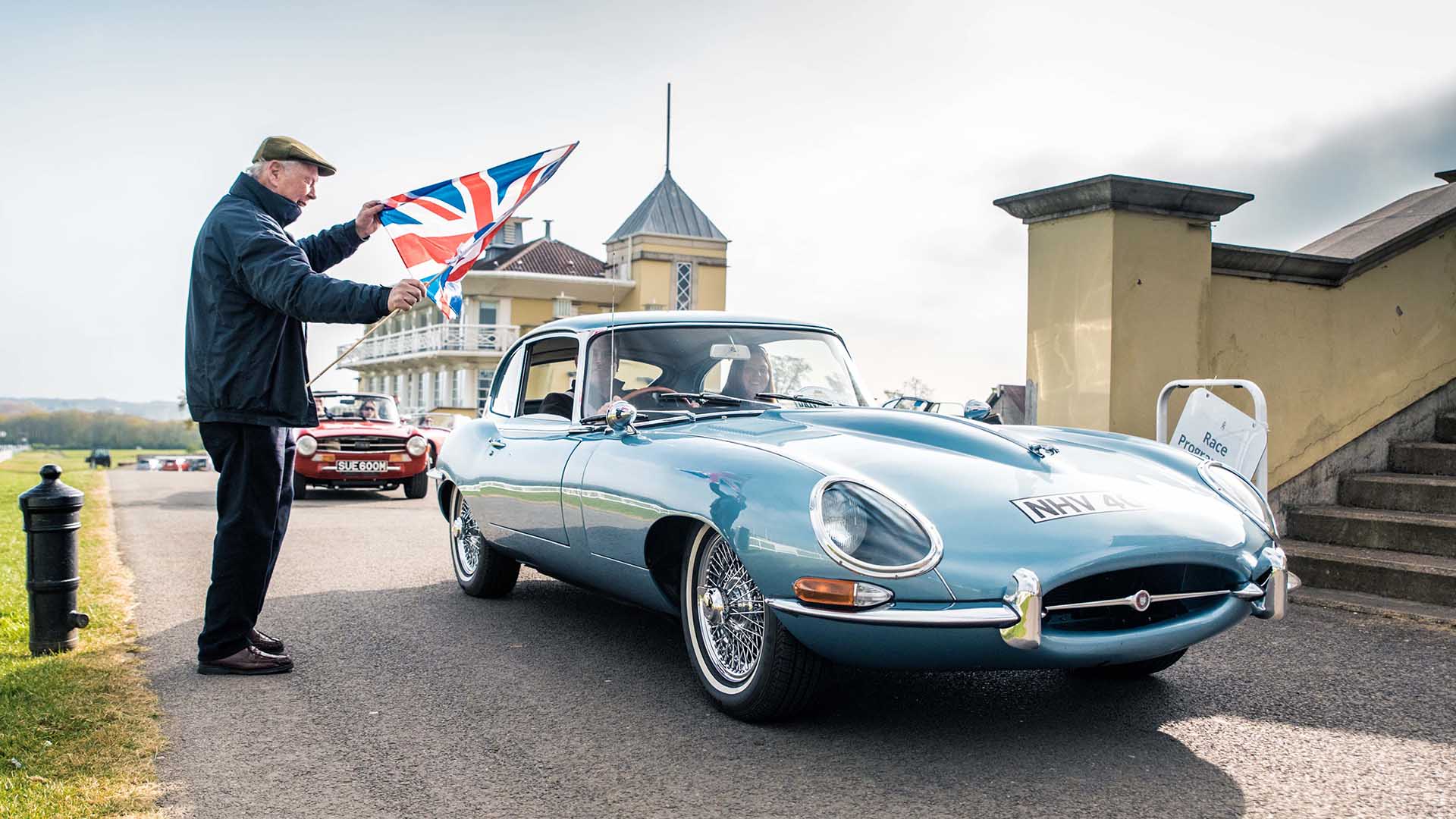
The Mini (1959) and Jaguar E-Type (1961). Two outstanding achievements that should have provided a springboard for the British motoring industry. The inquest into how it all went so horribly wrong will be saved for another day. For now, let us salute a British icon. Happy 60th, E-Type.



[…] Ray Claridge, owner of Cinema Vehicle Services, and Josh Hancock, owner of Joshcar, helped narrow down the search to this particular Jaguar. […]